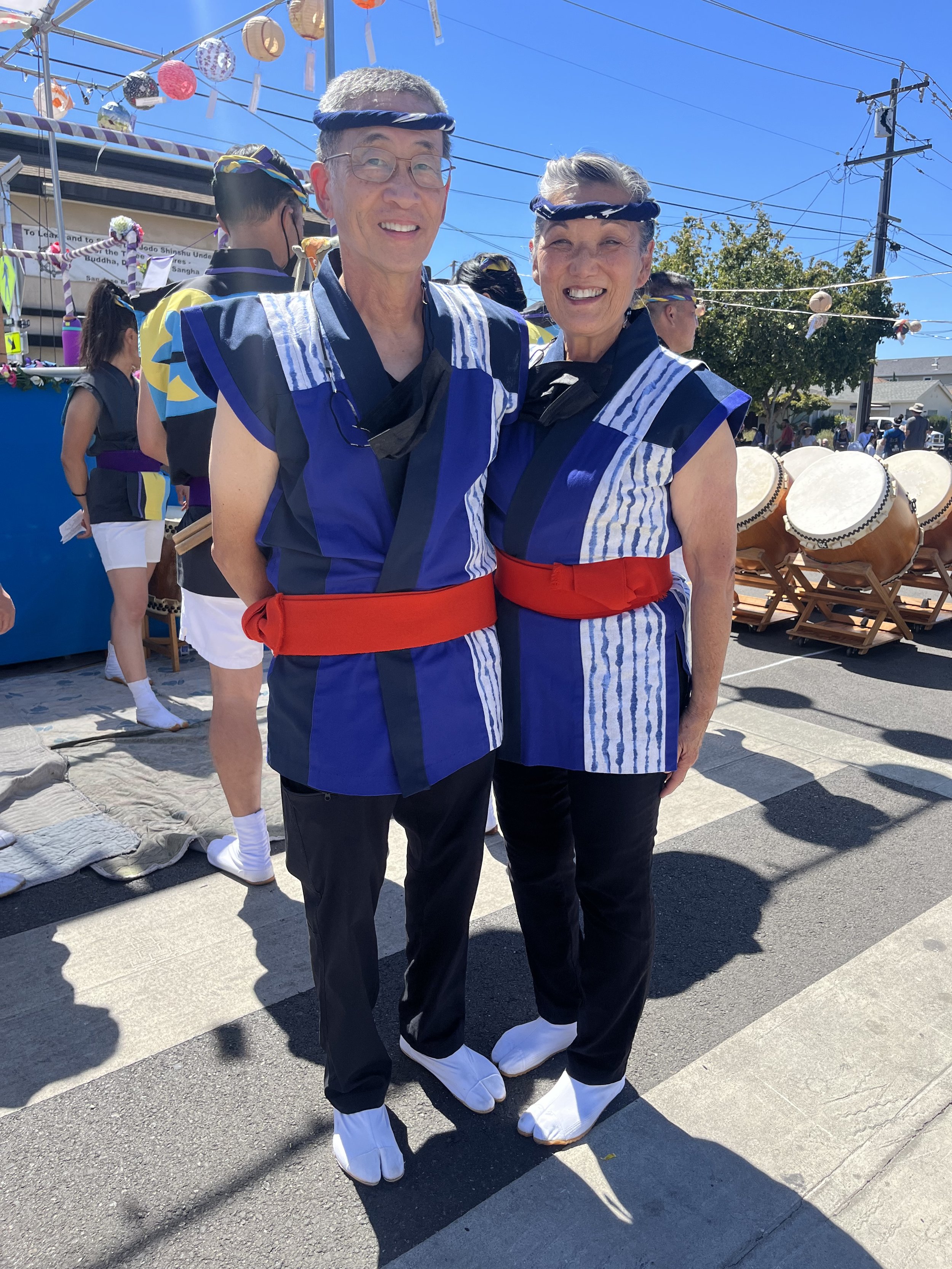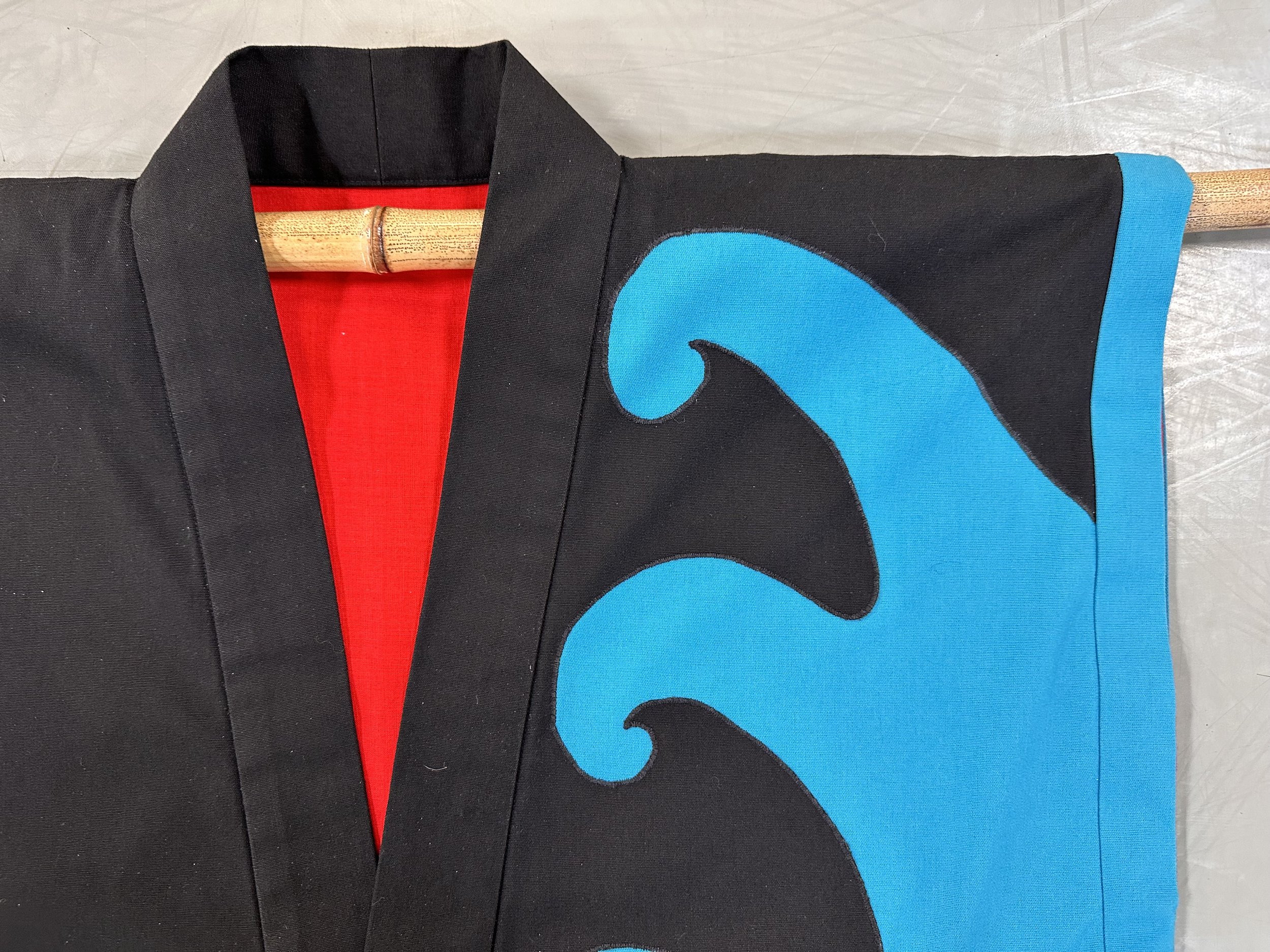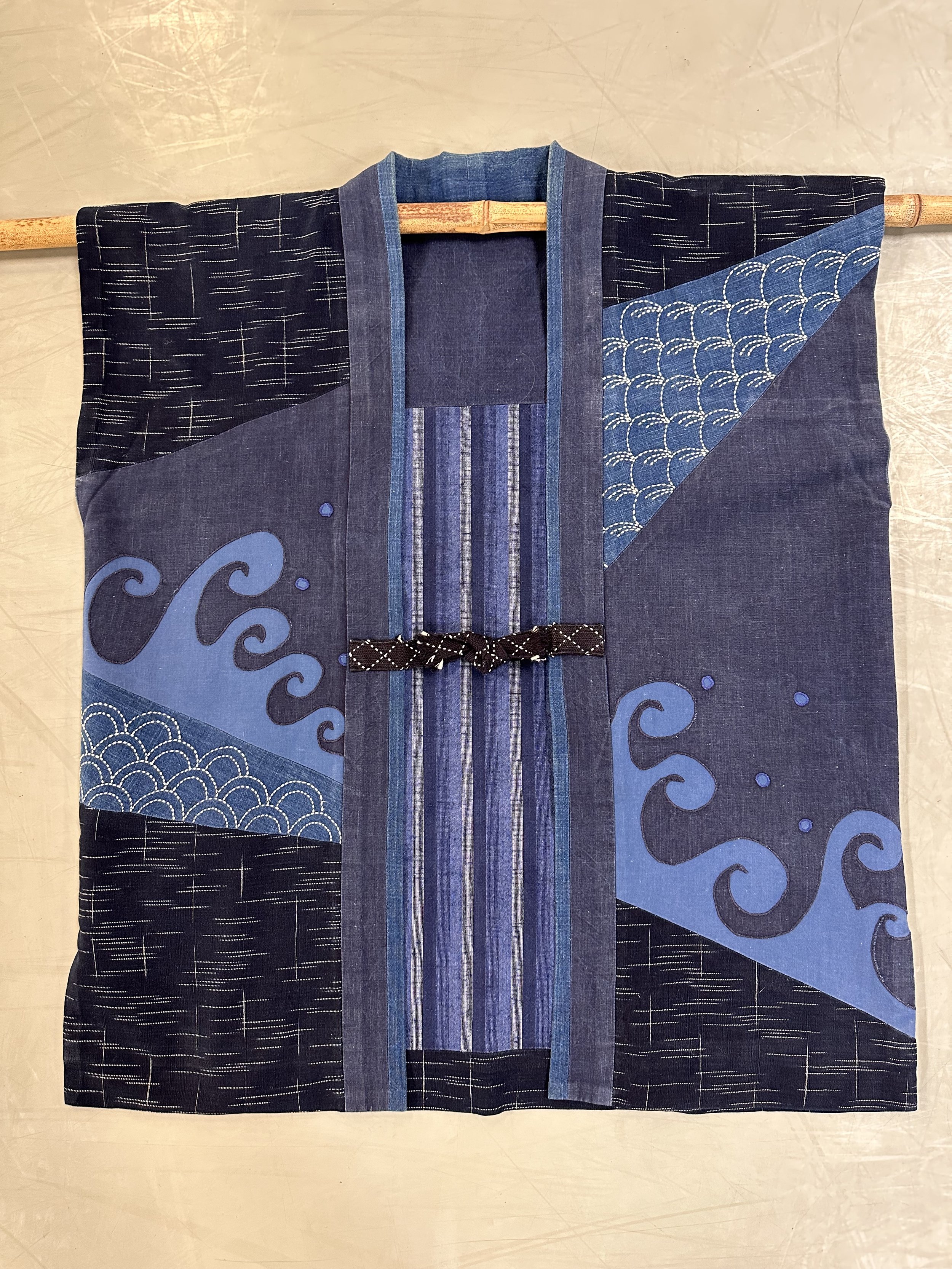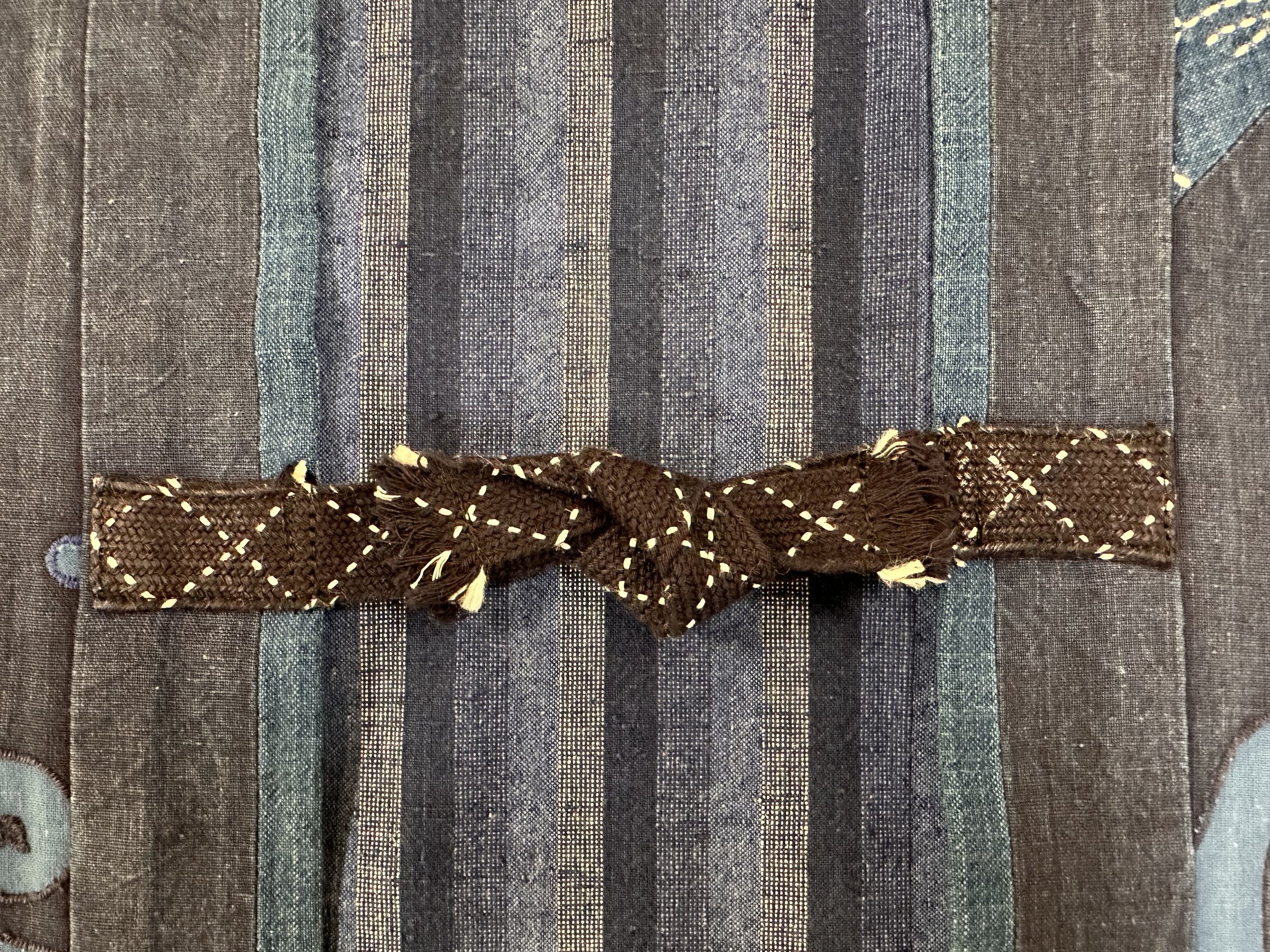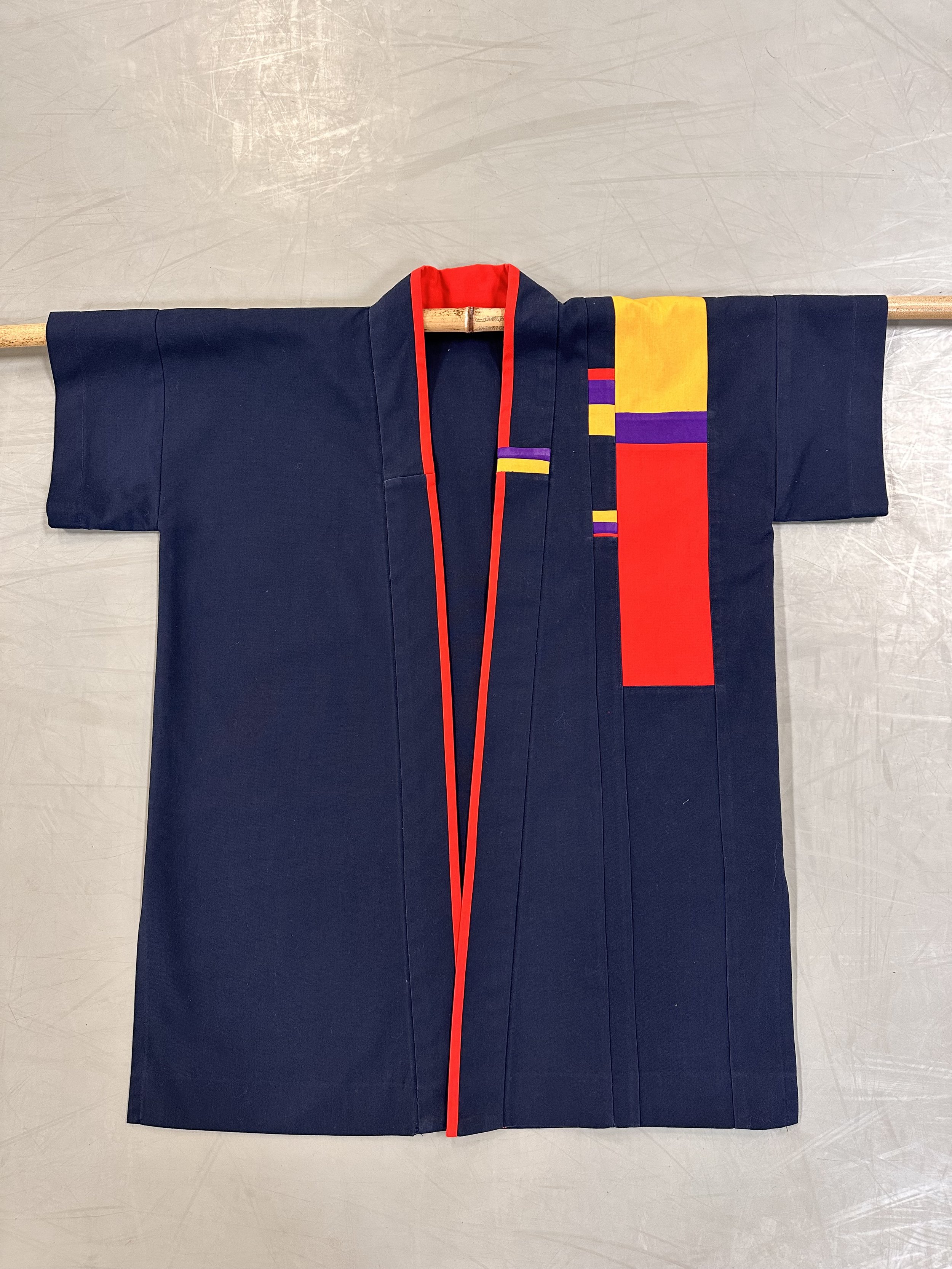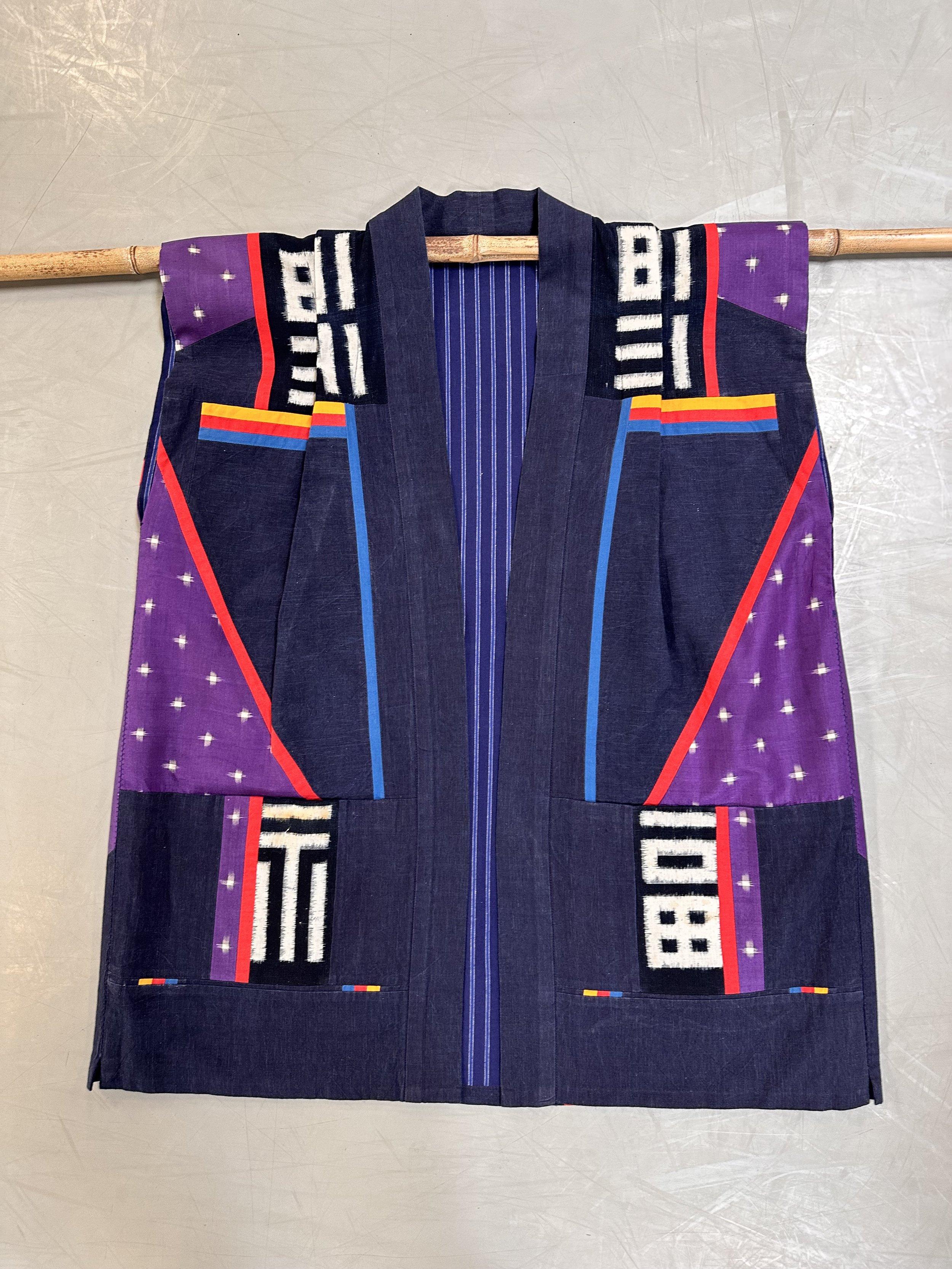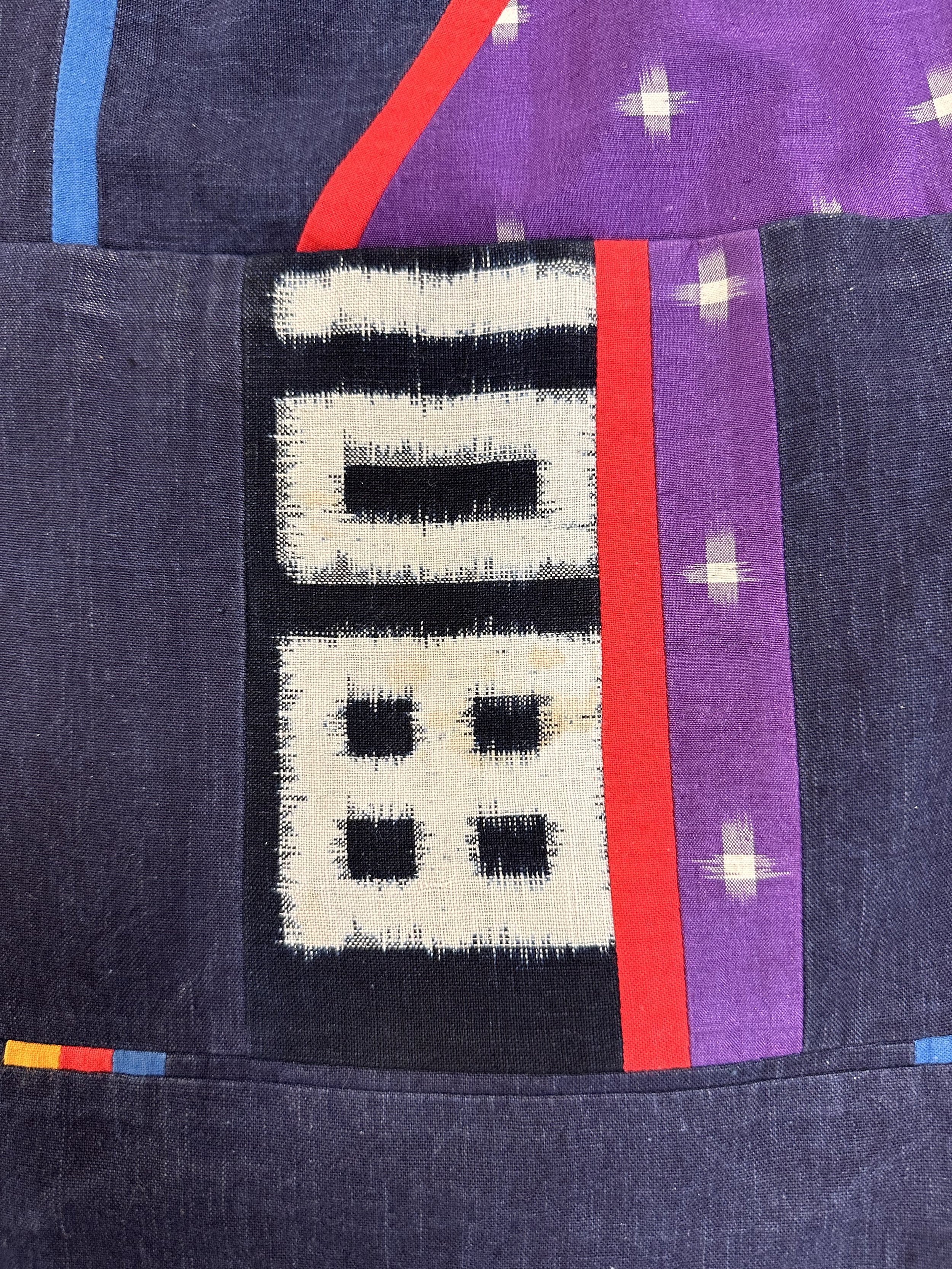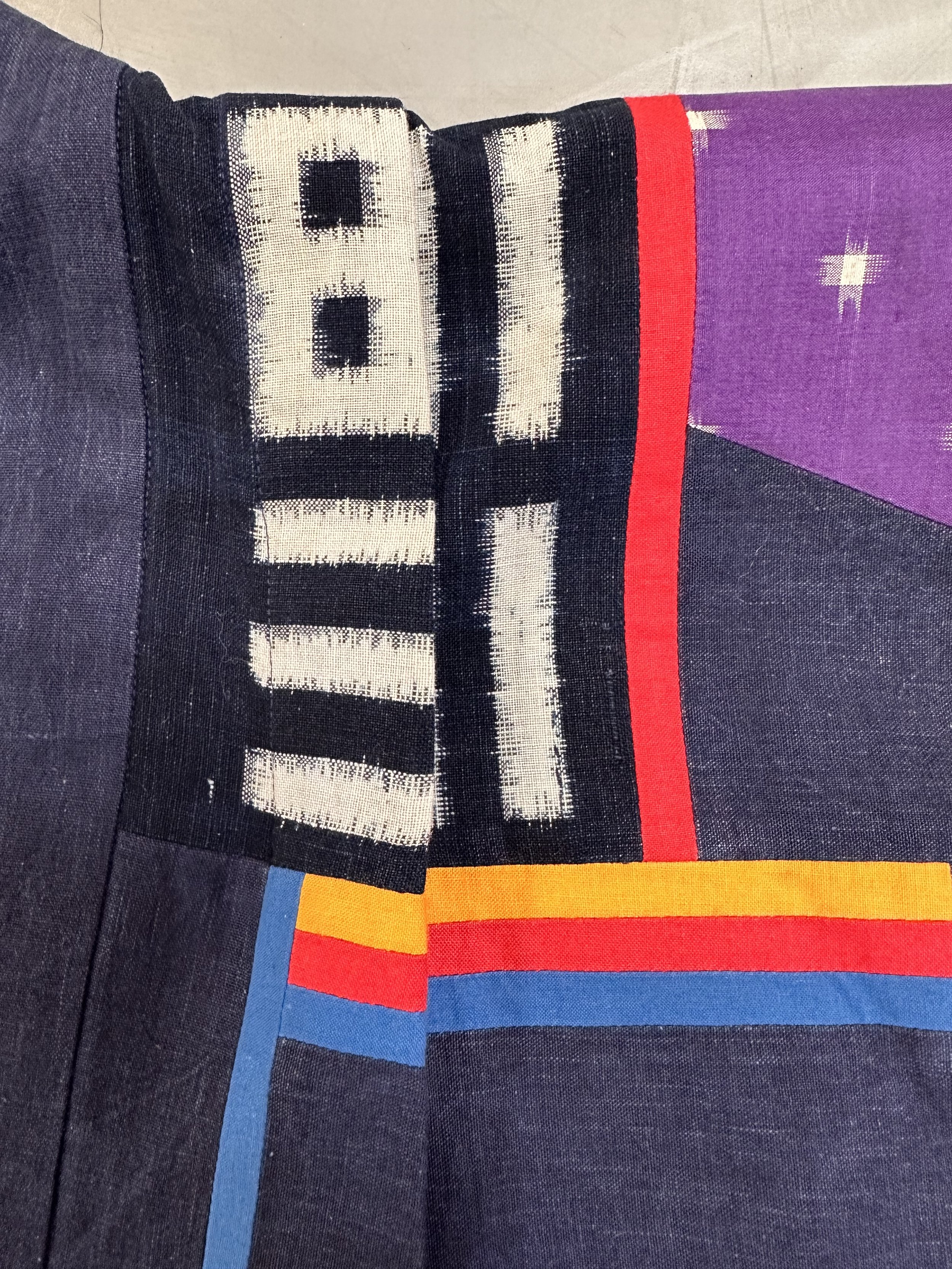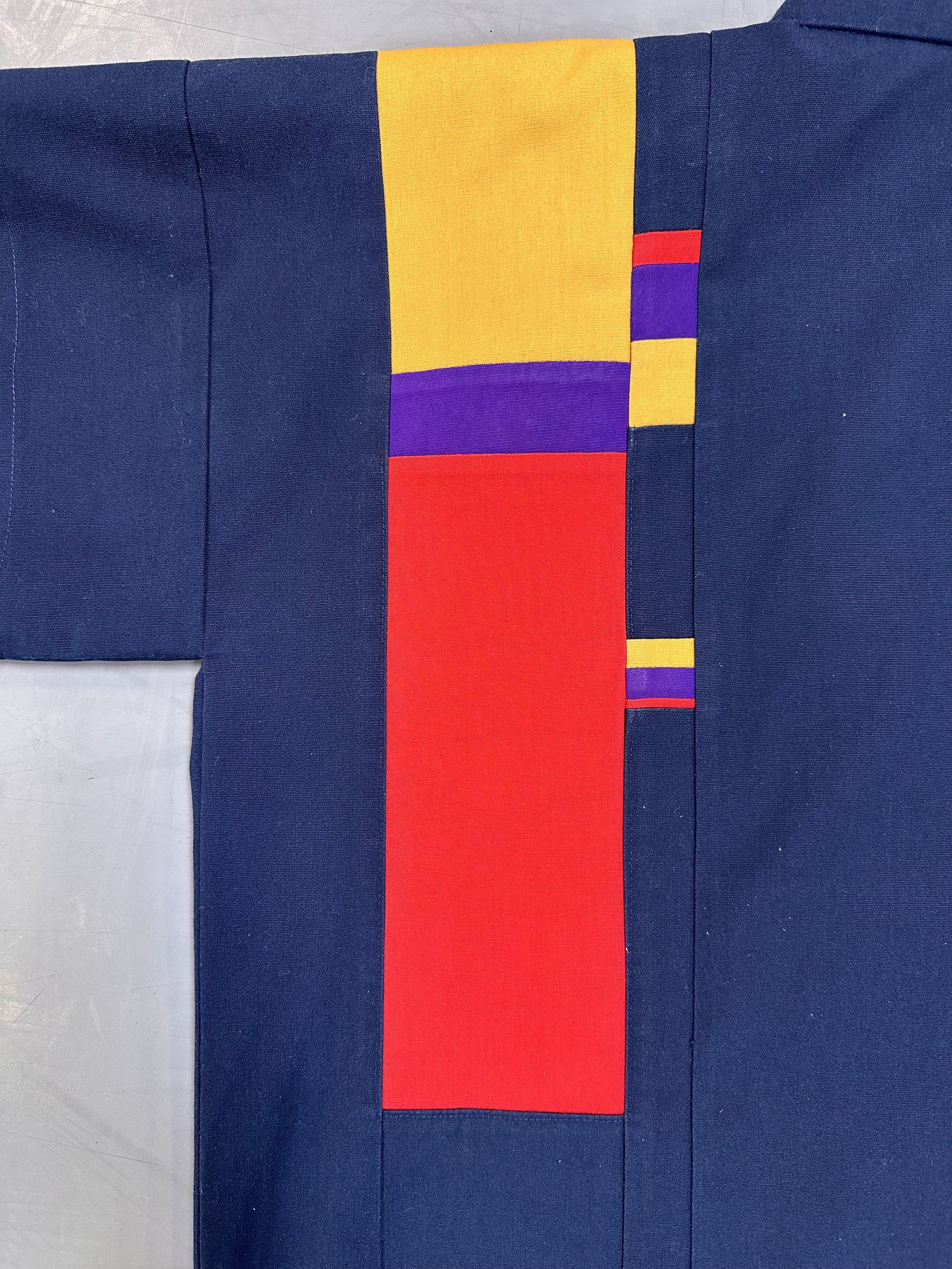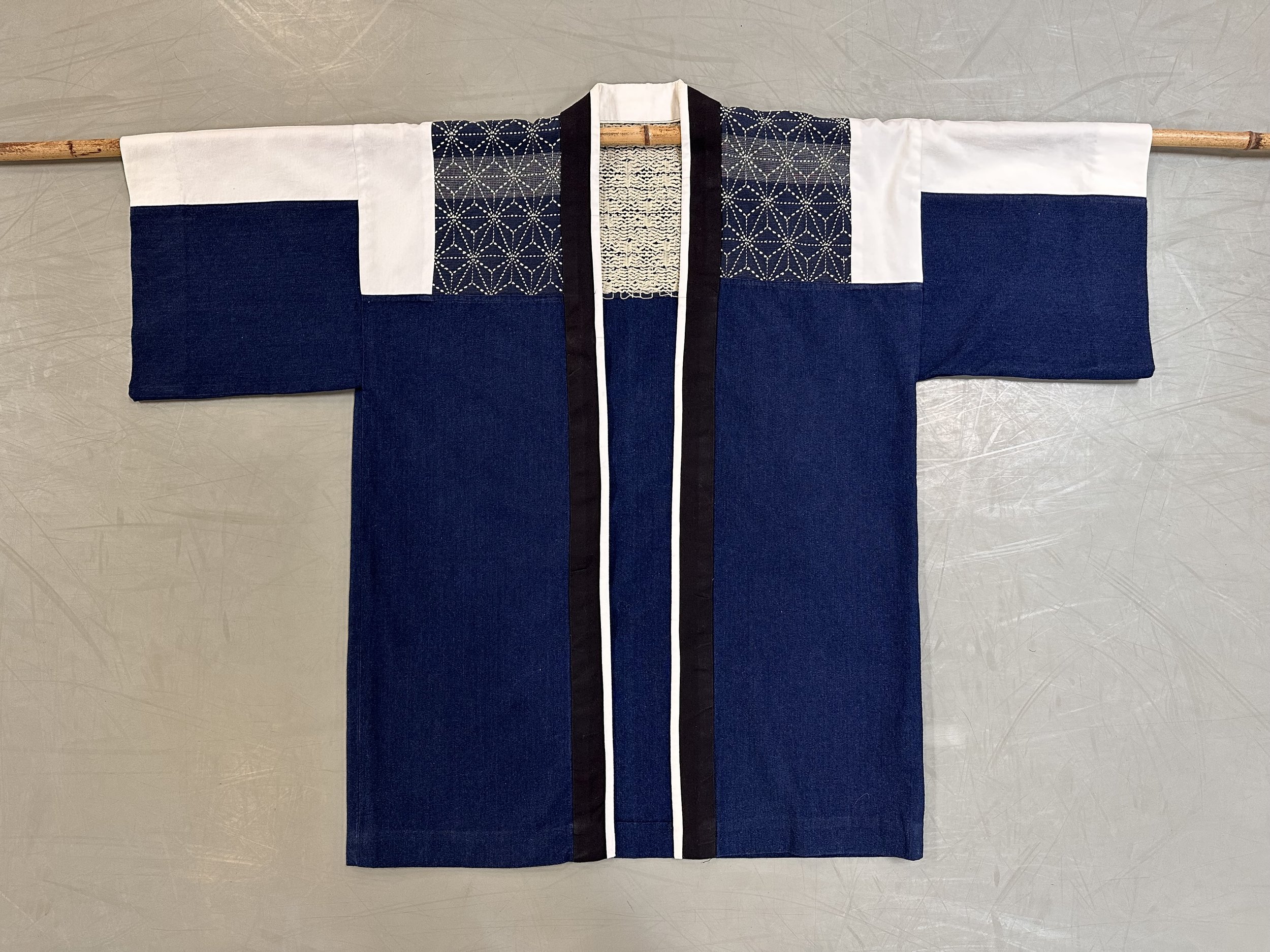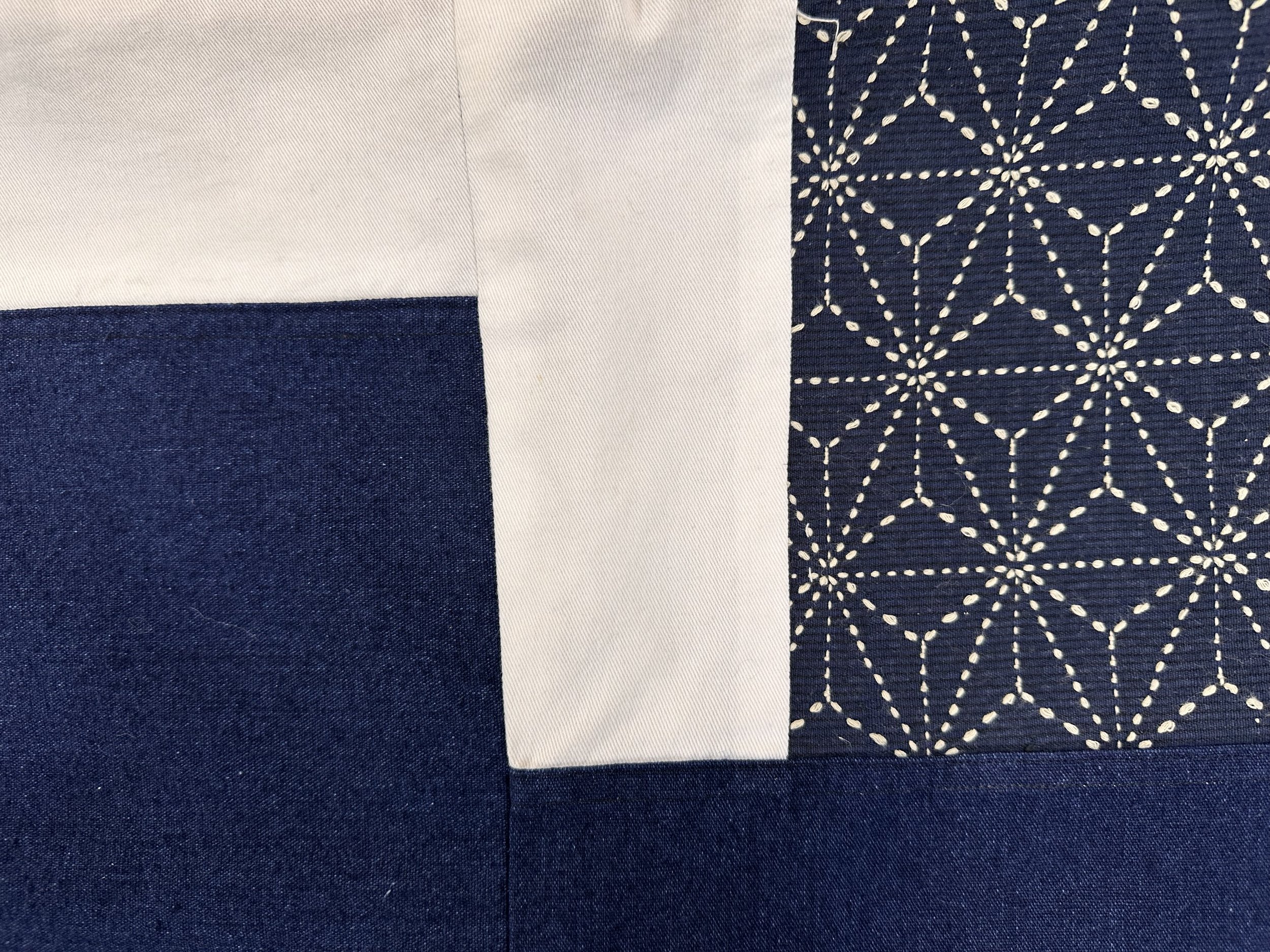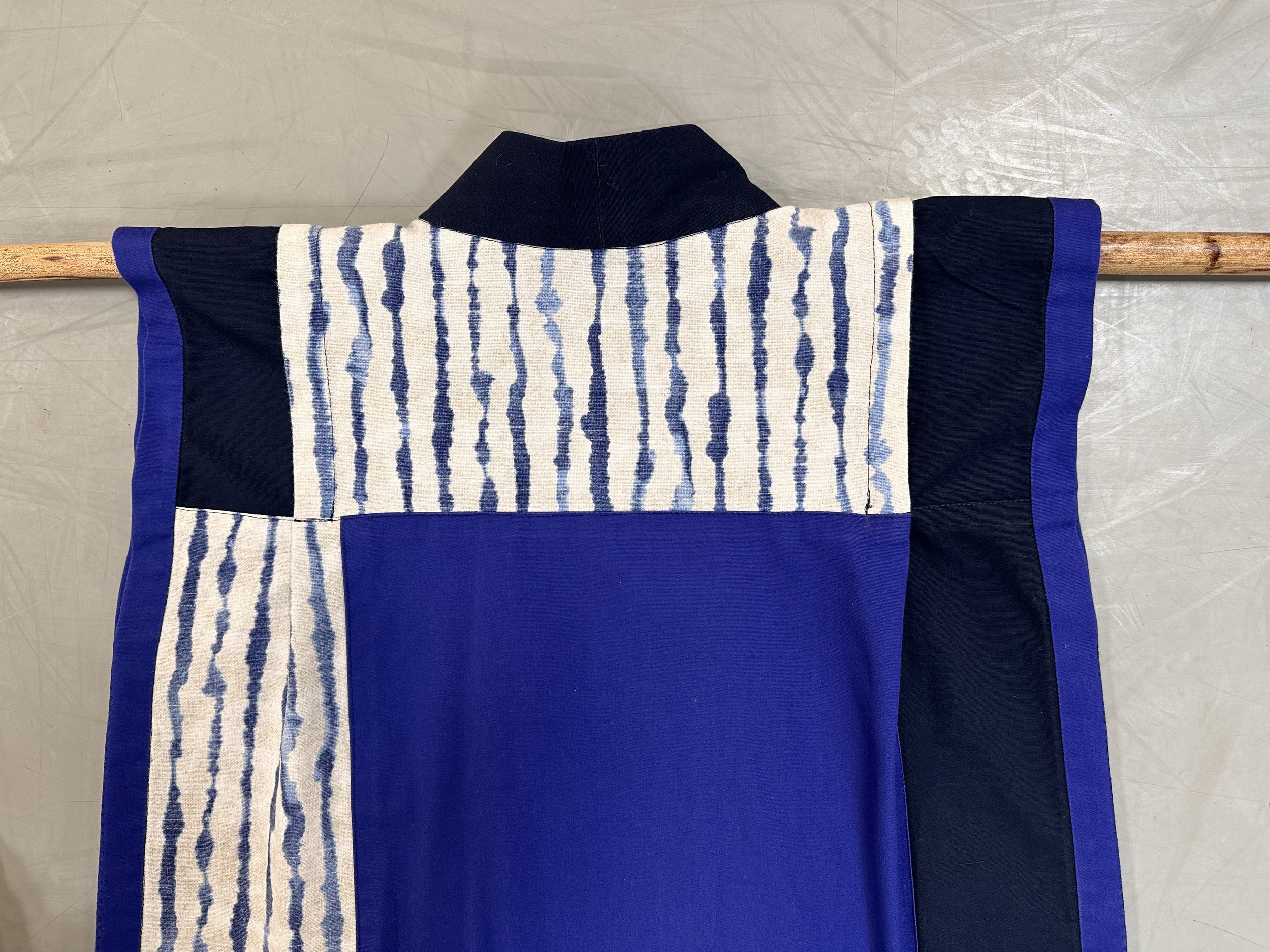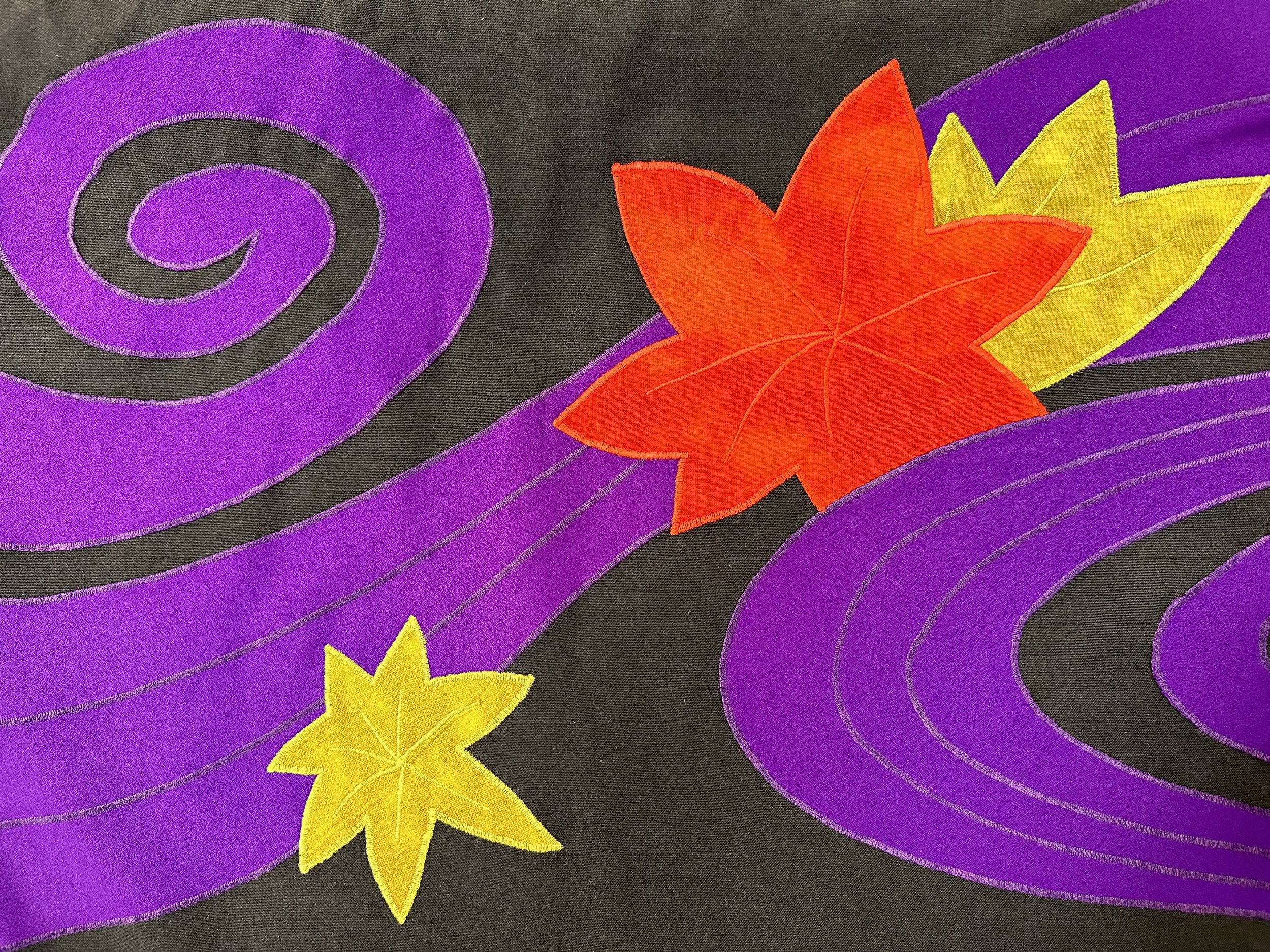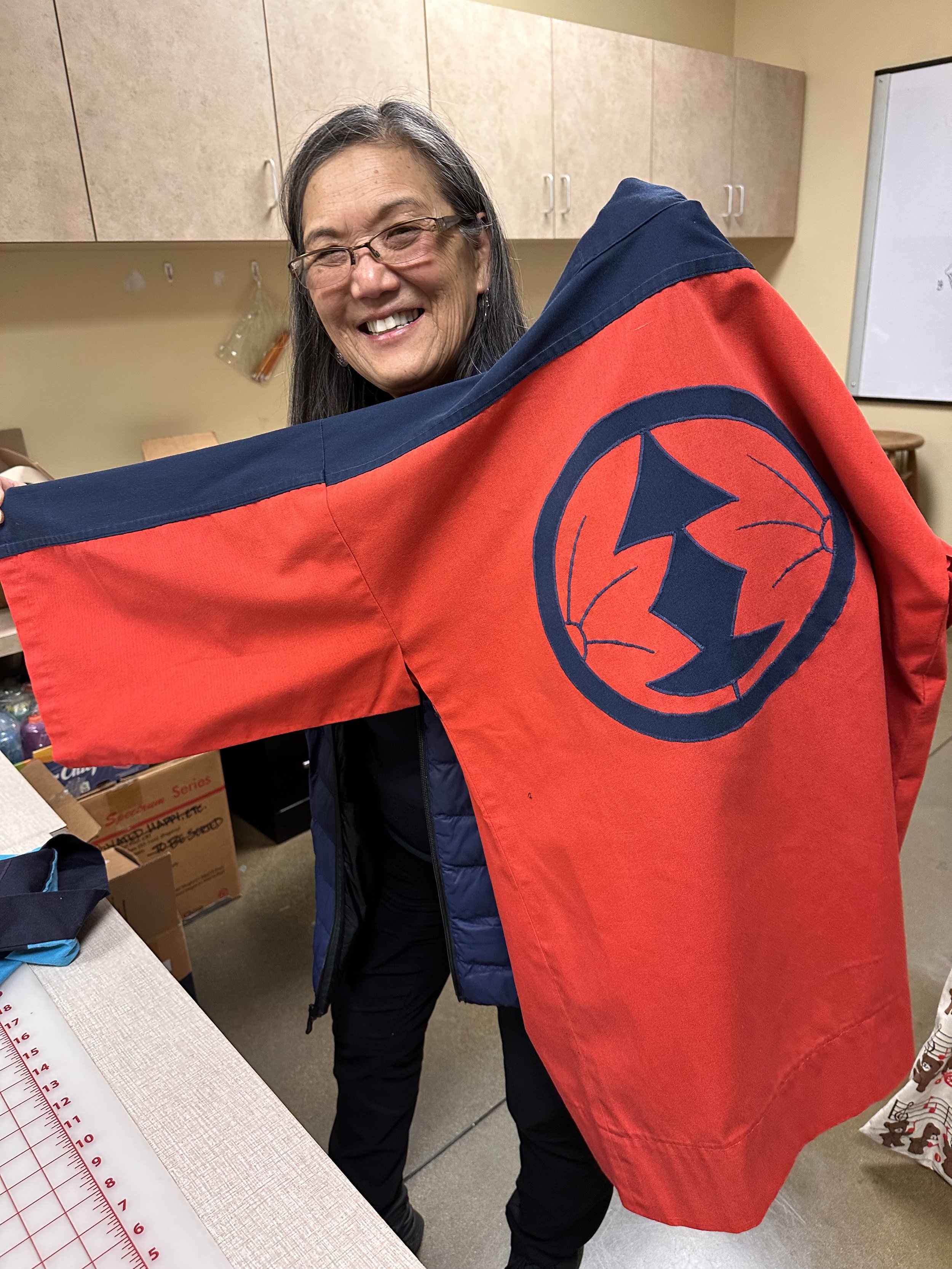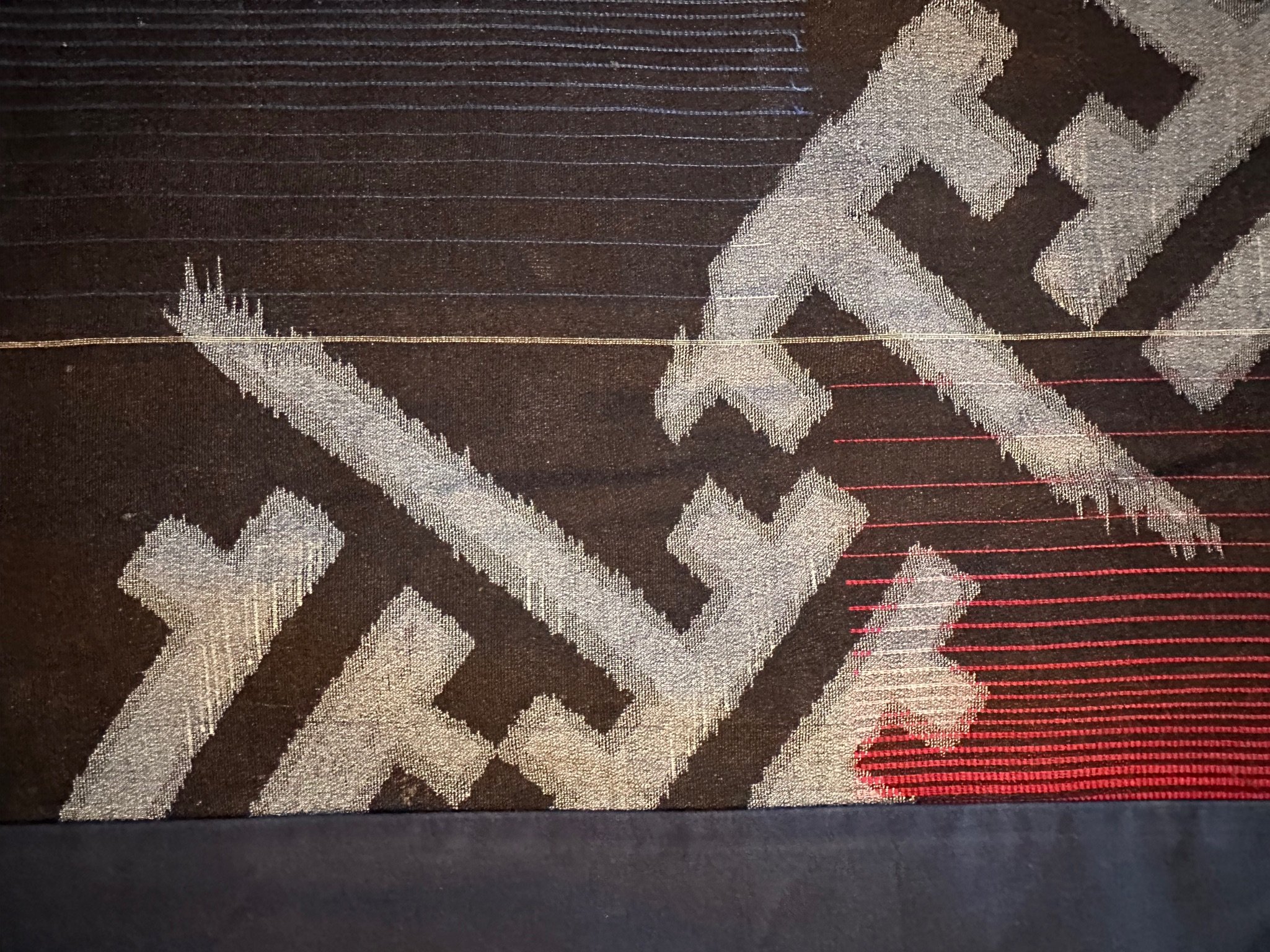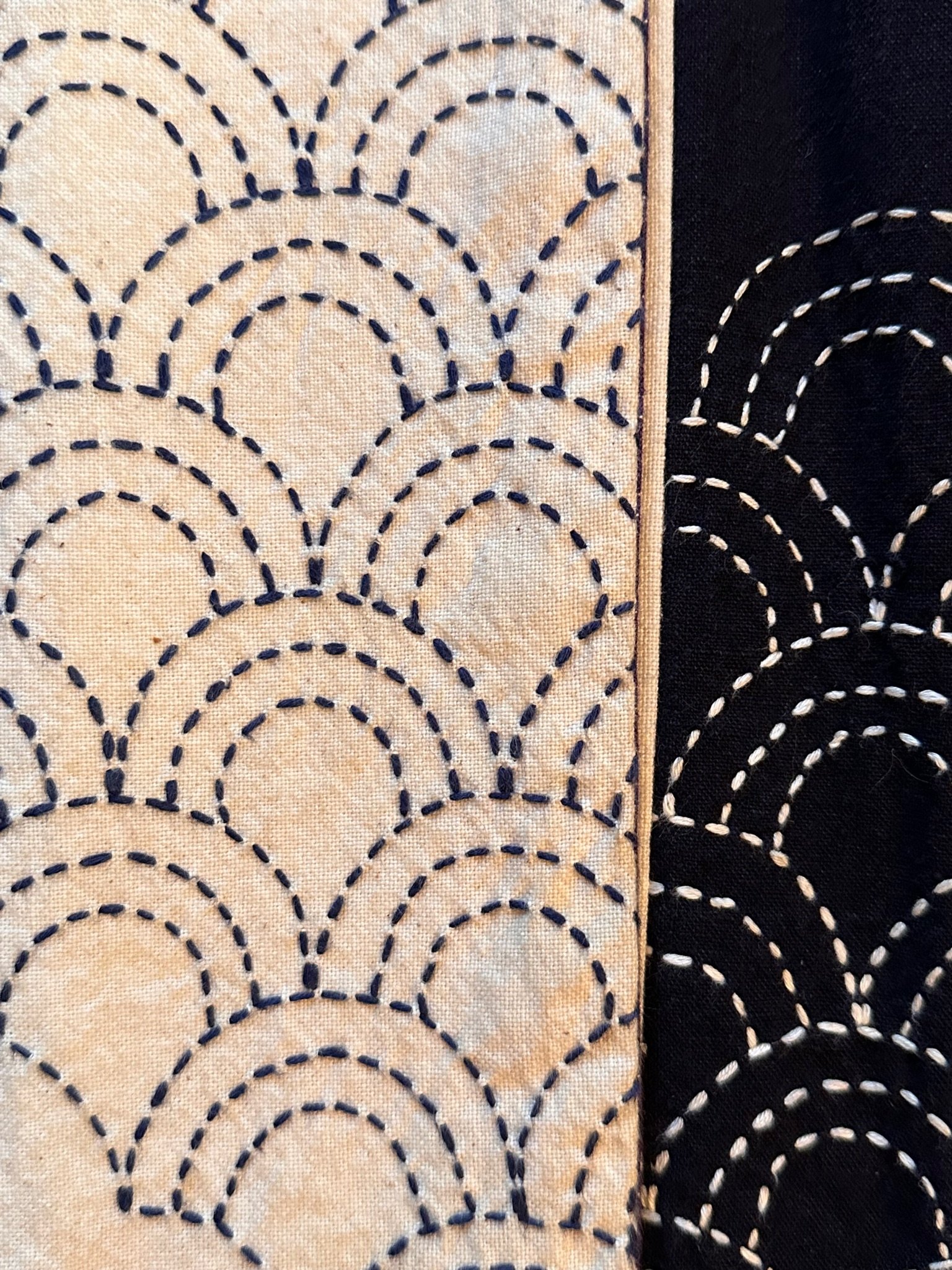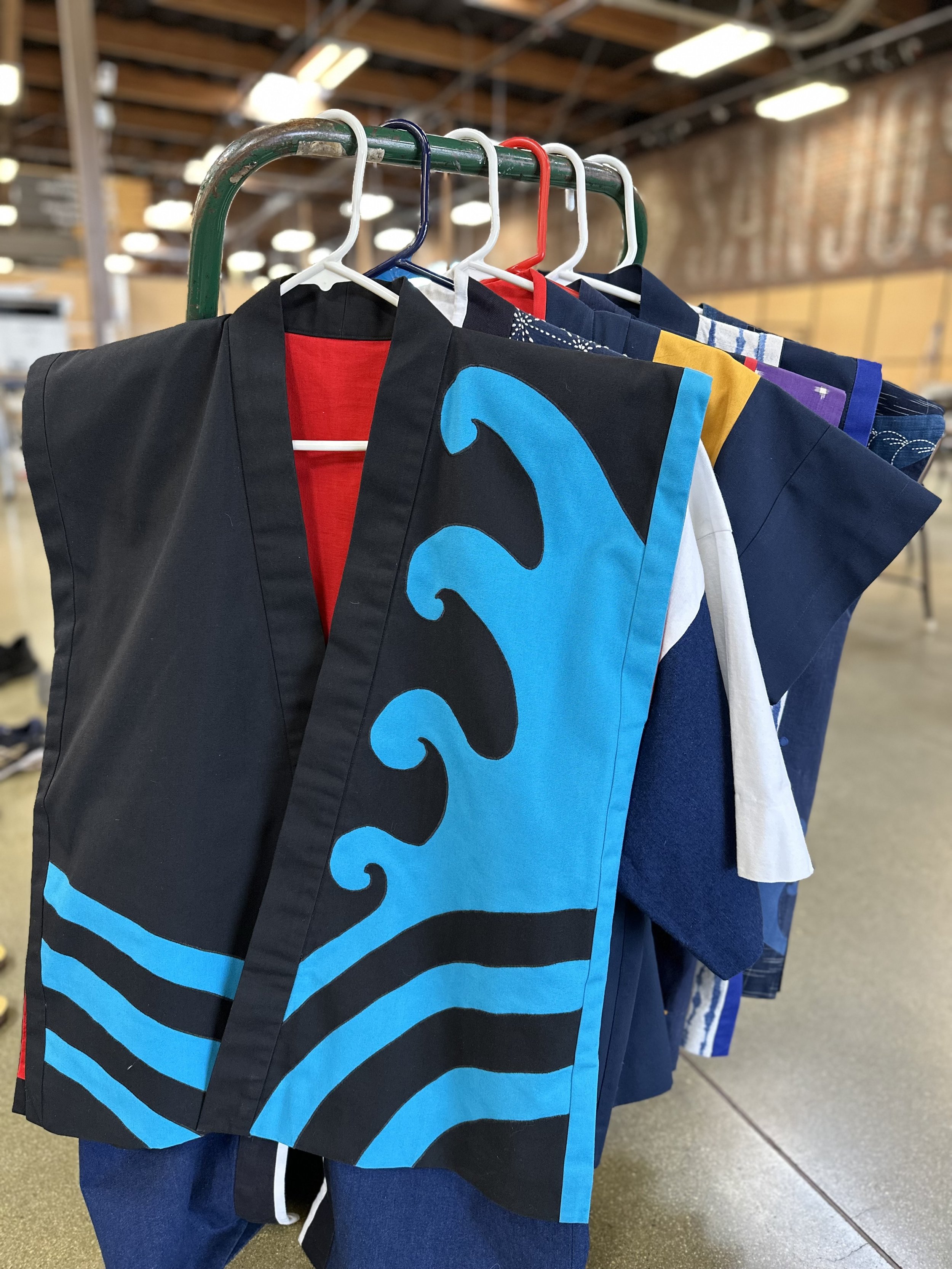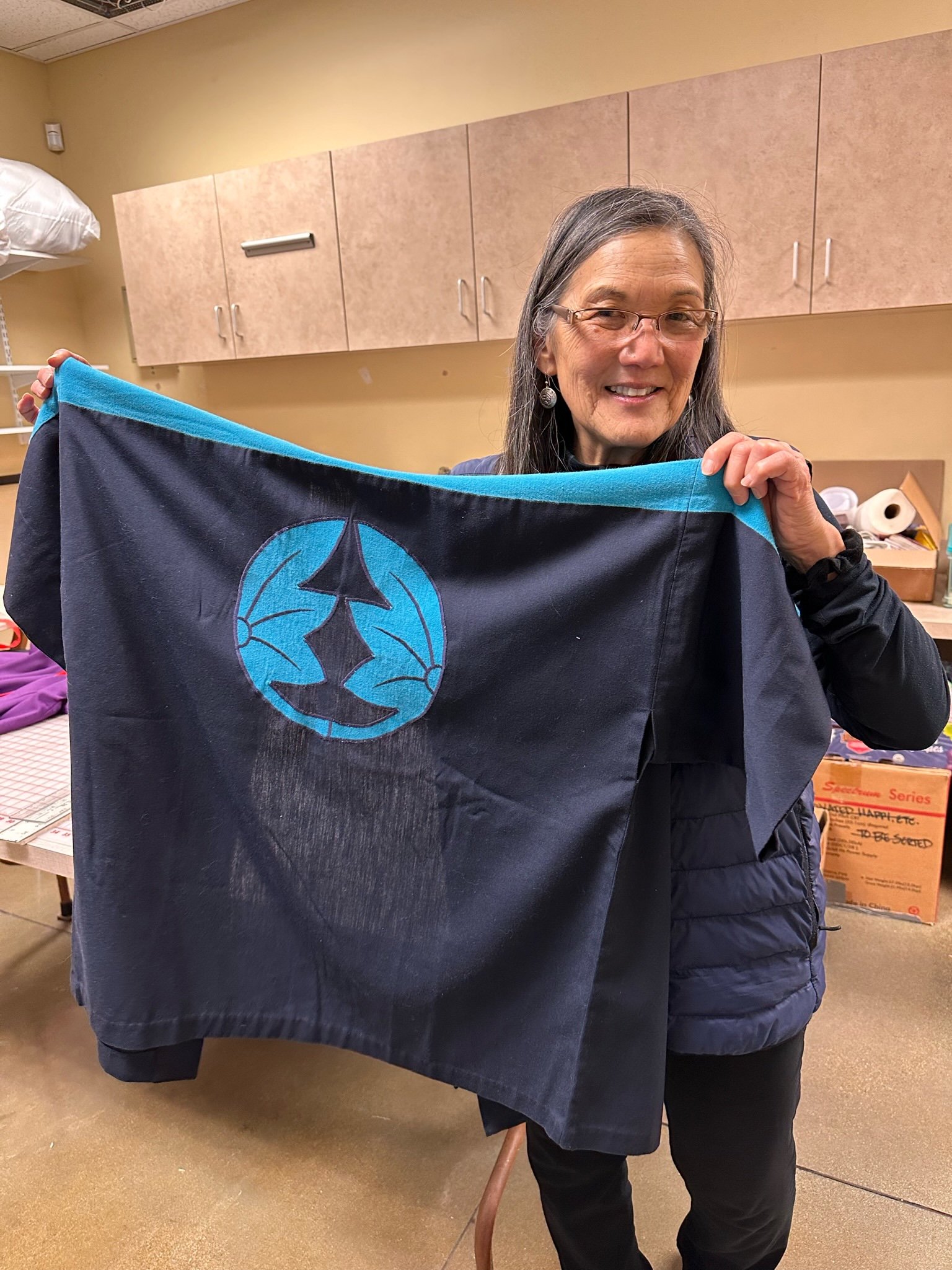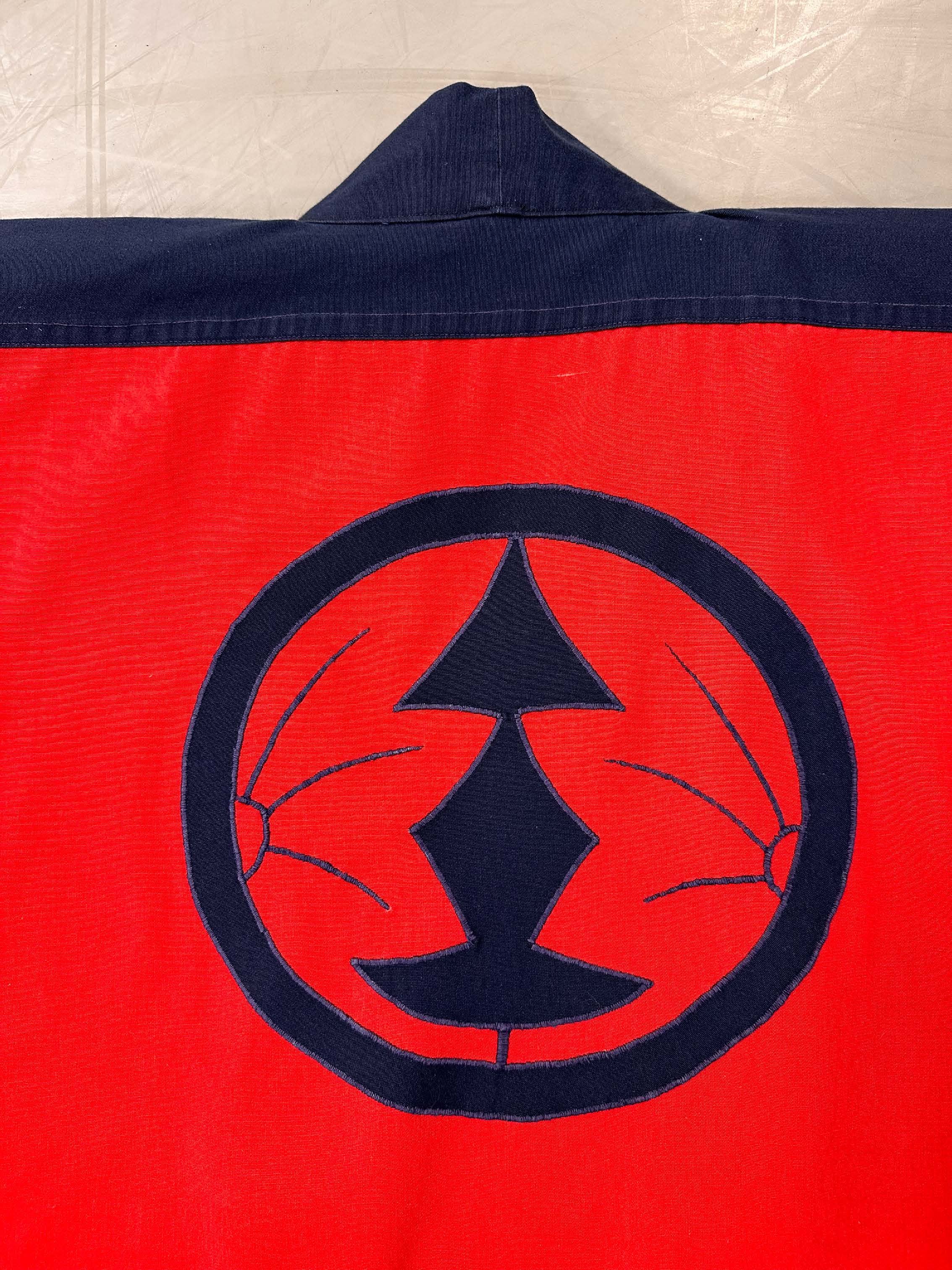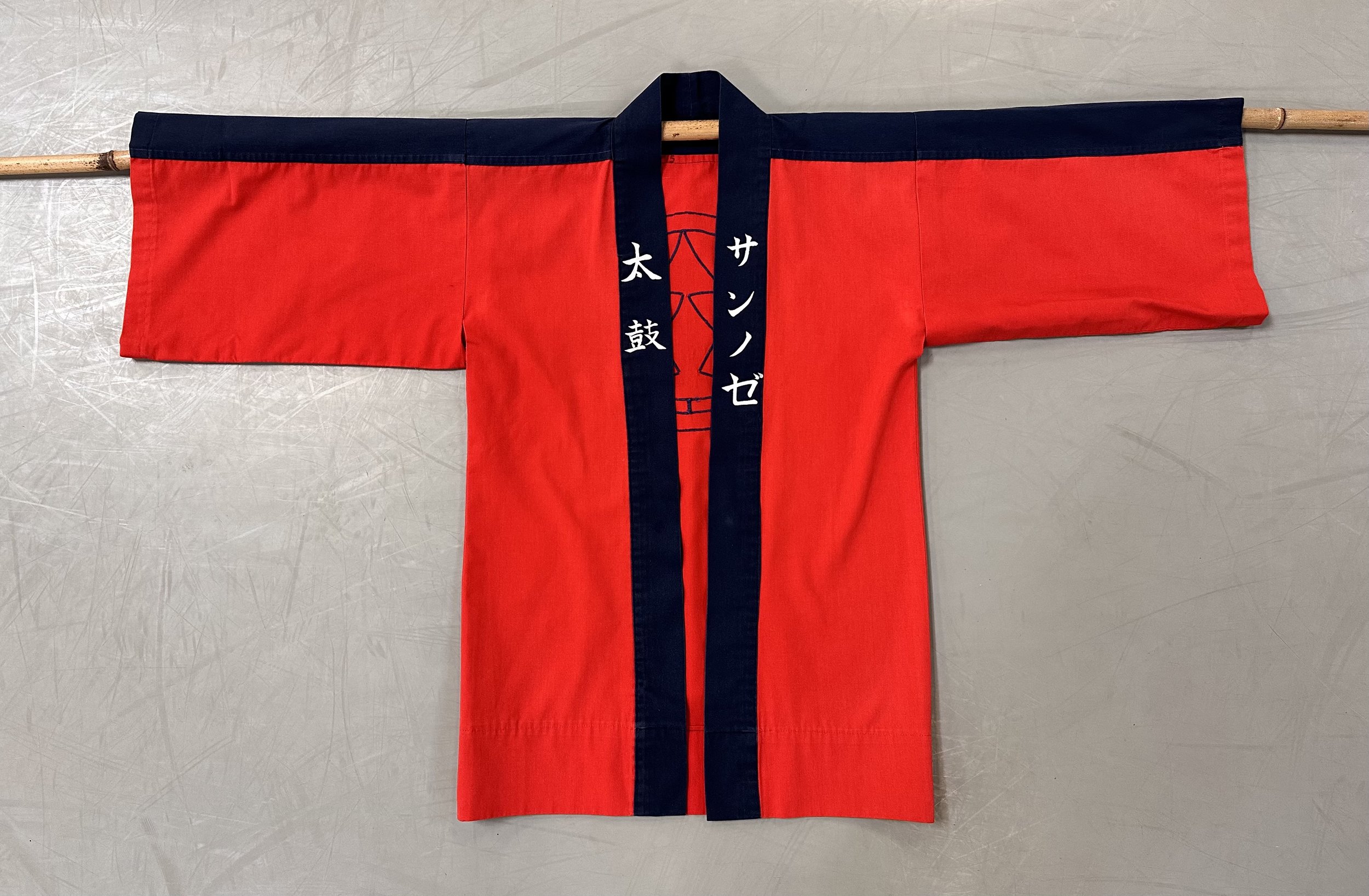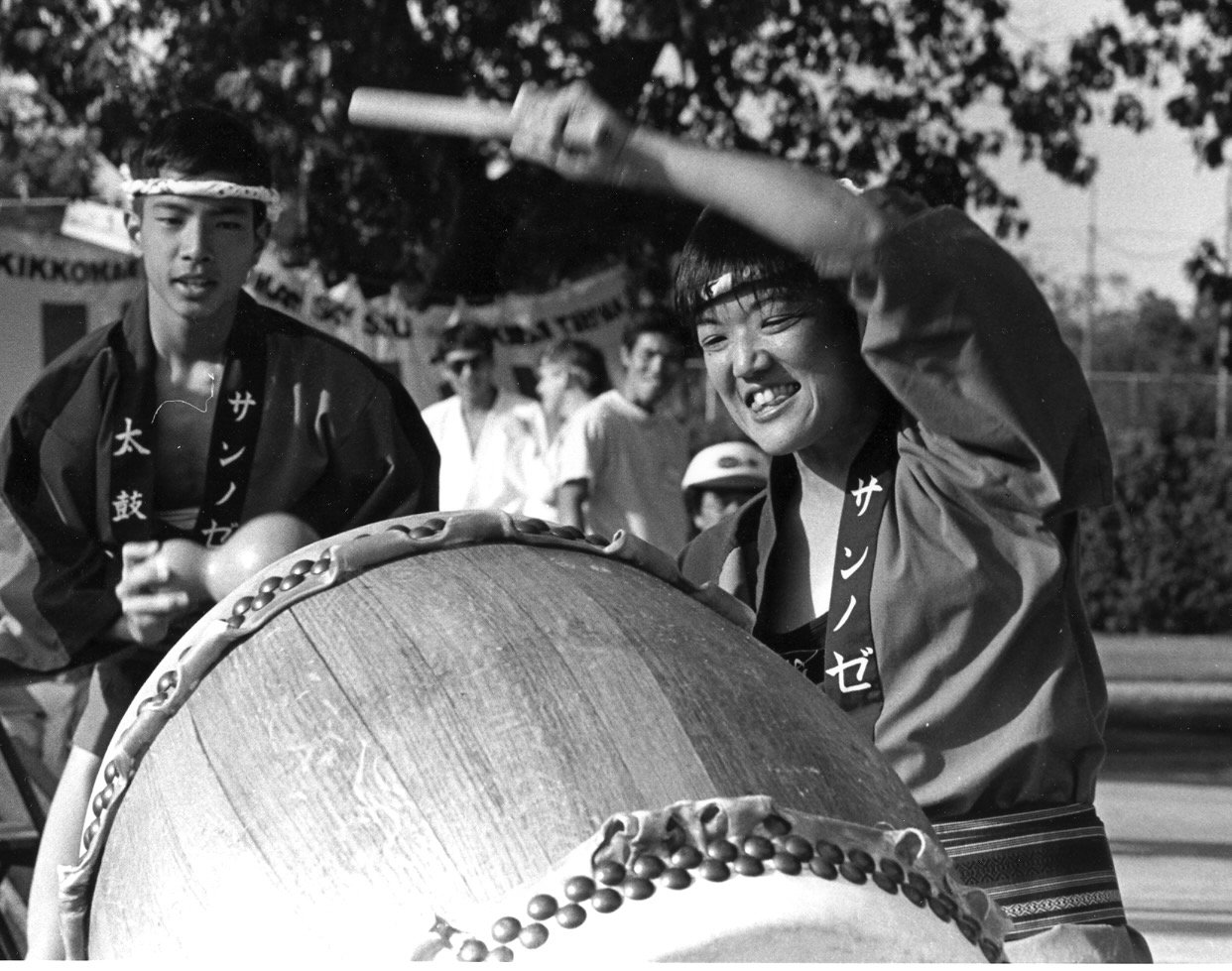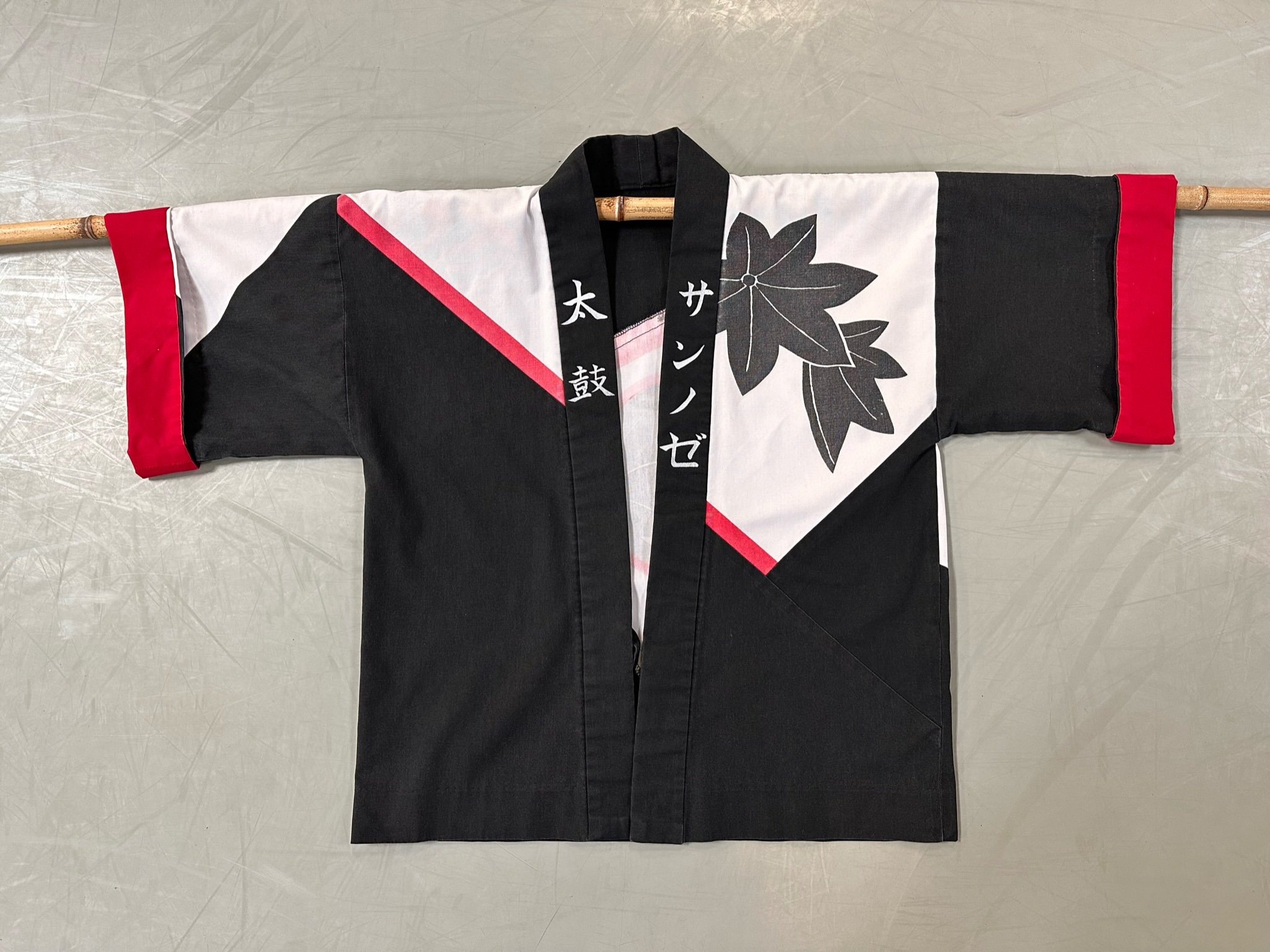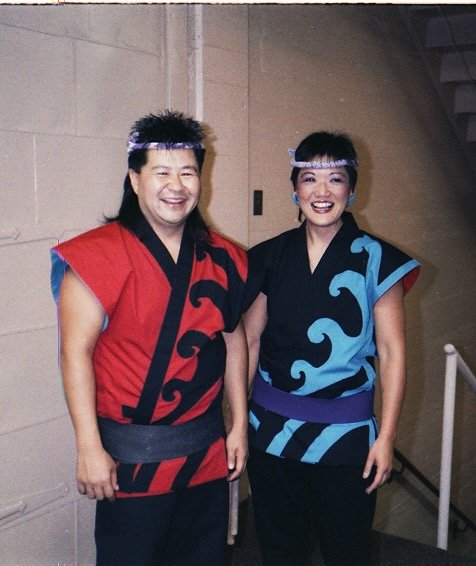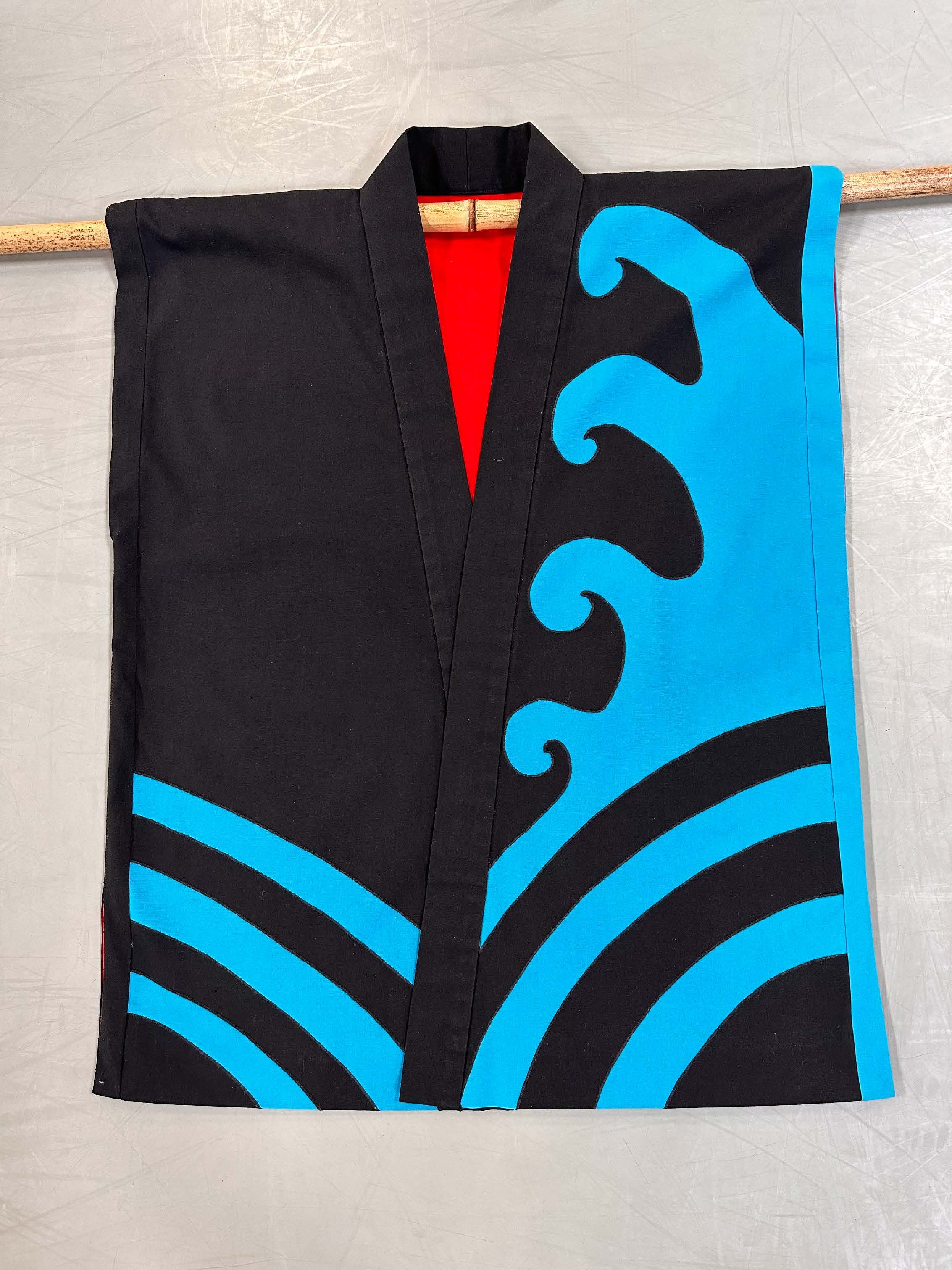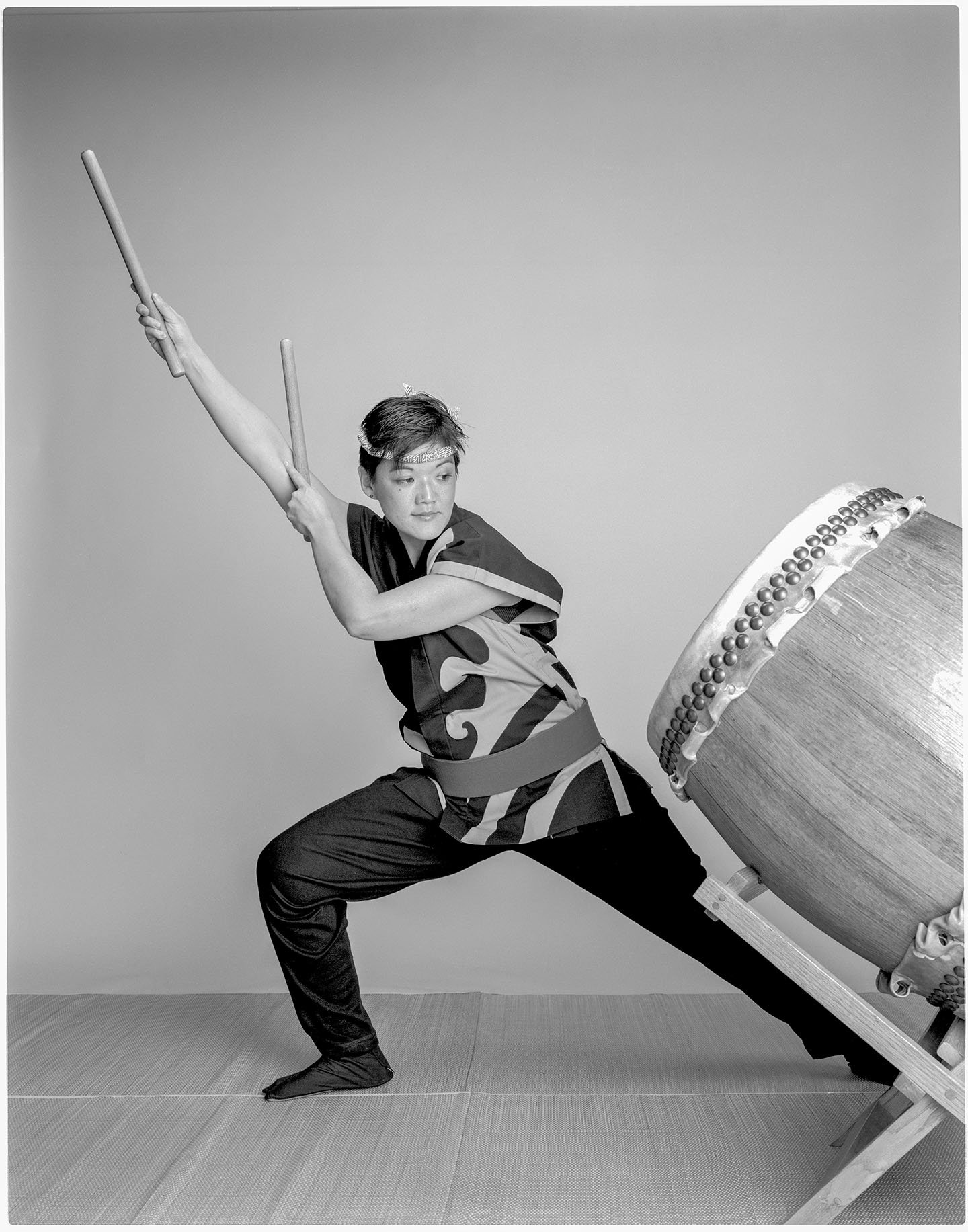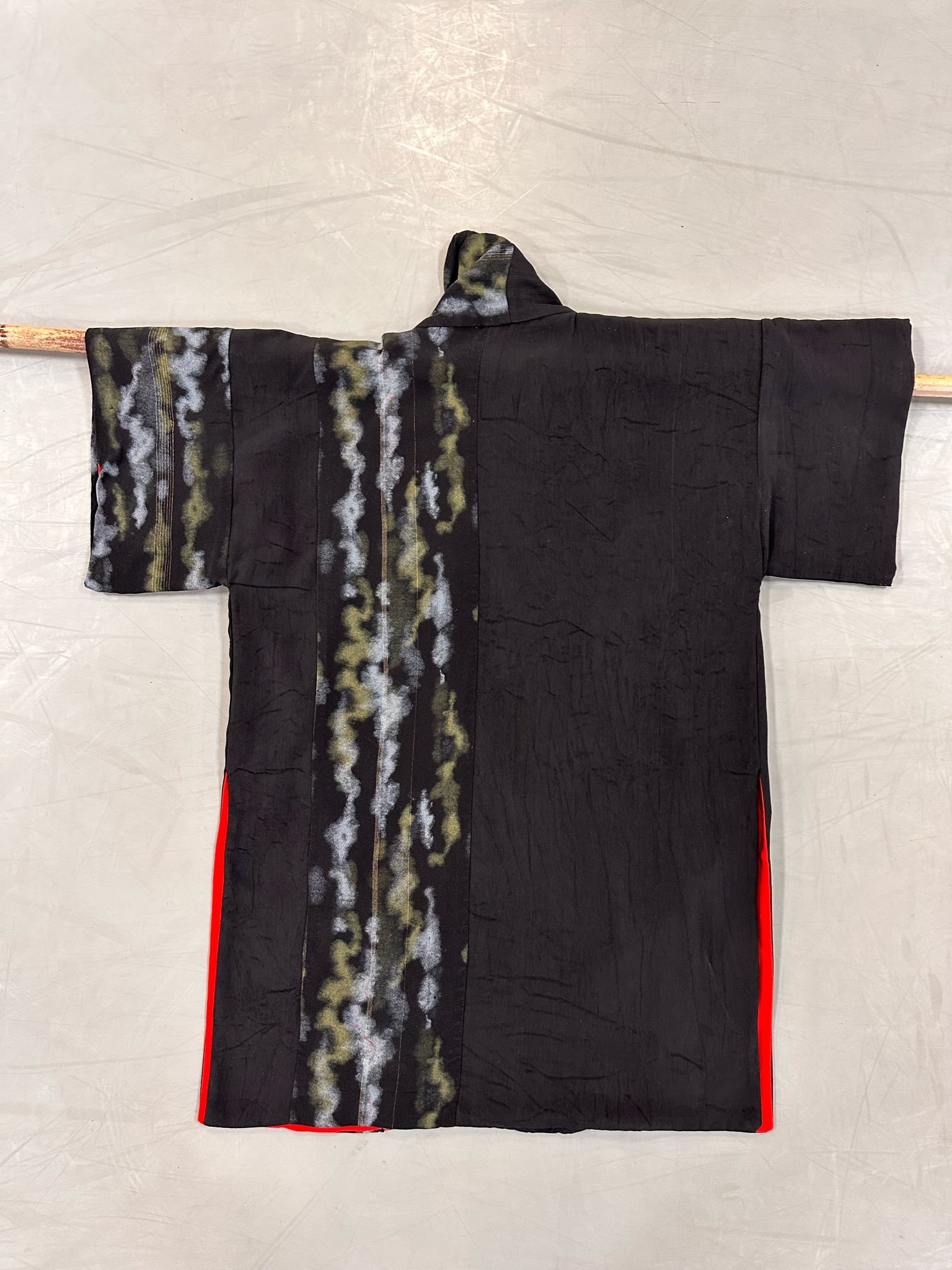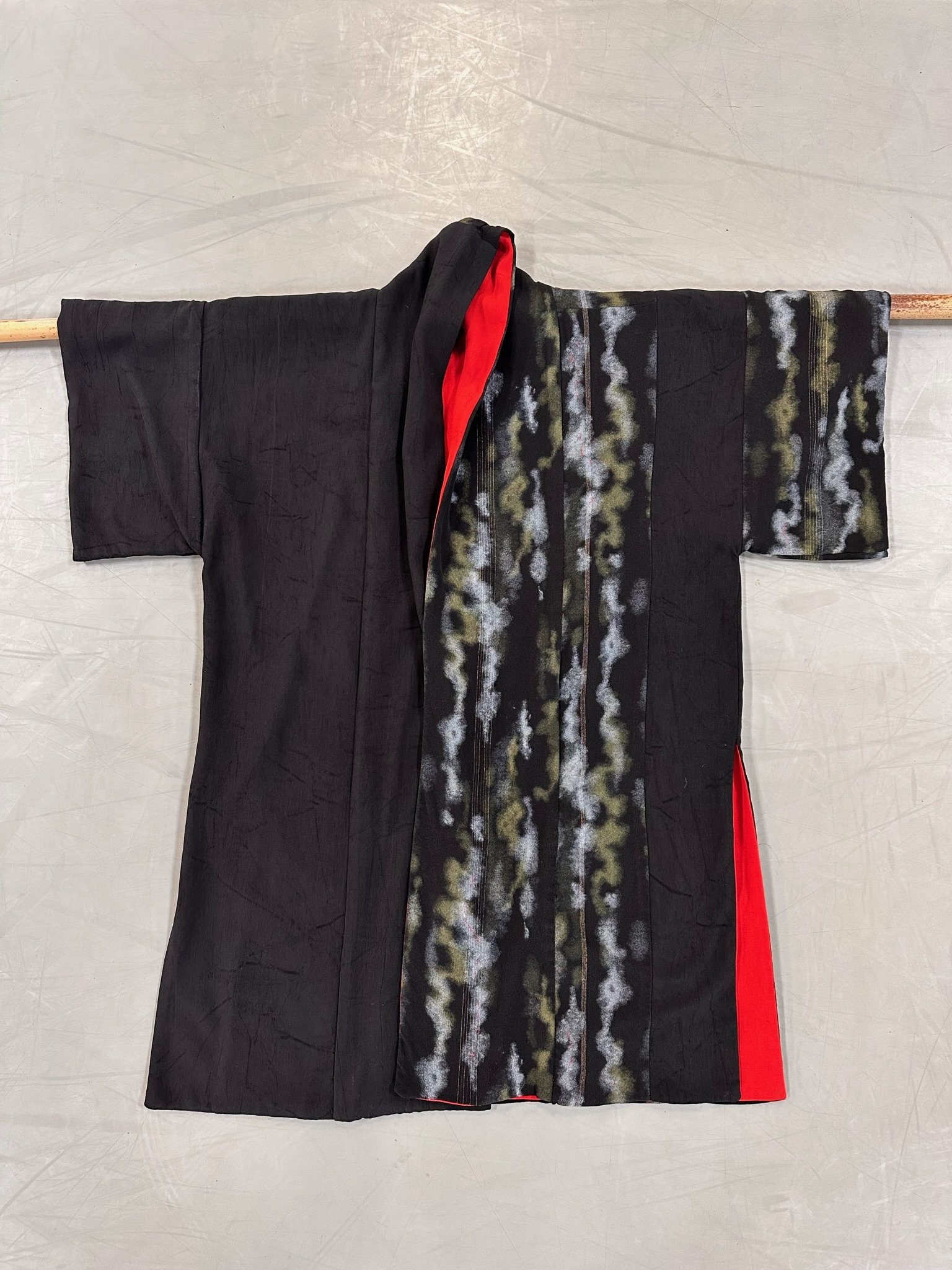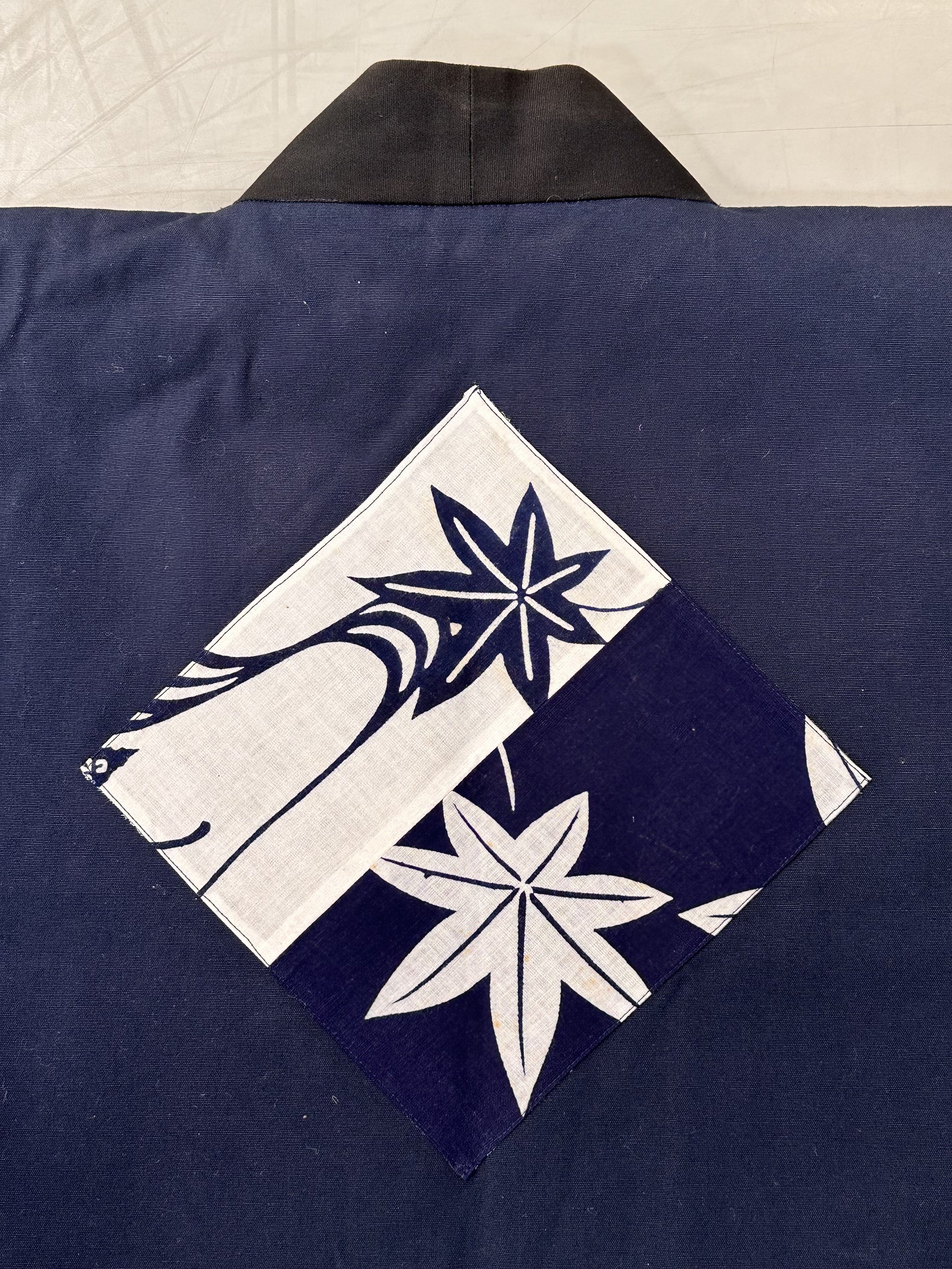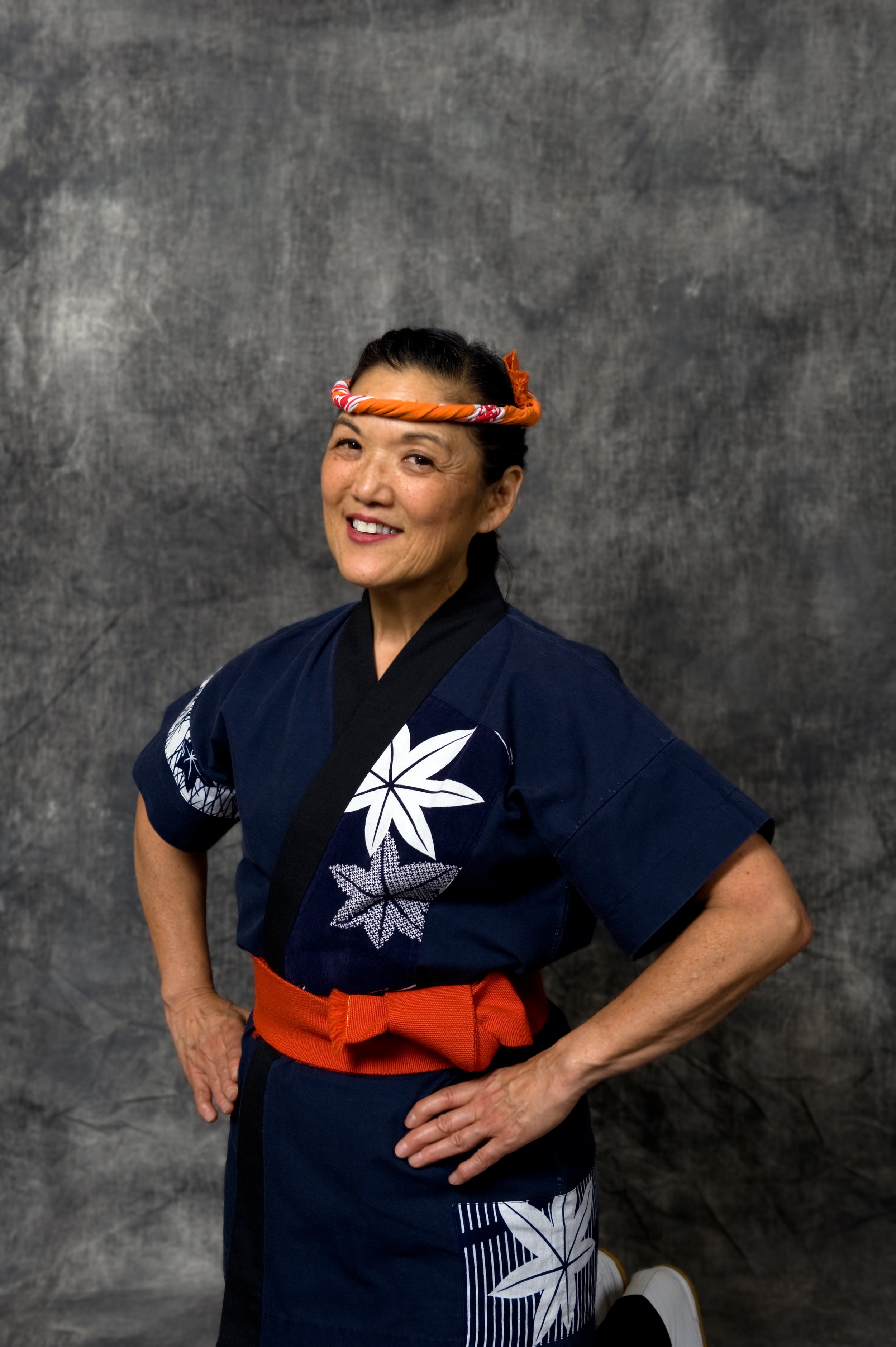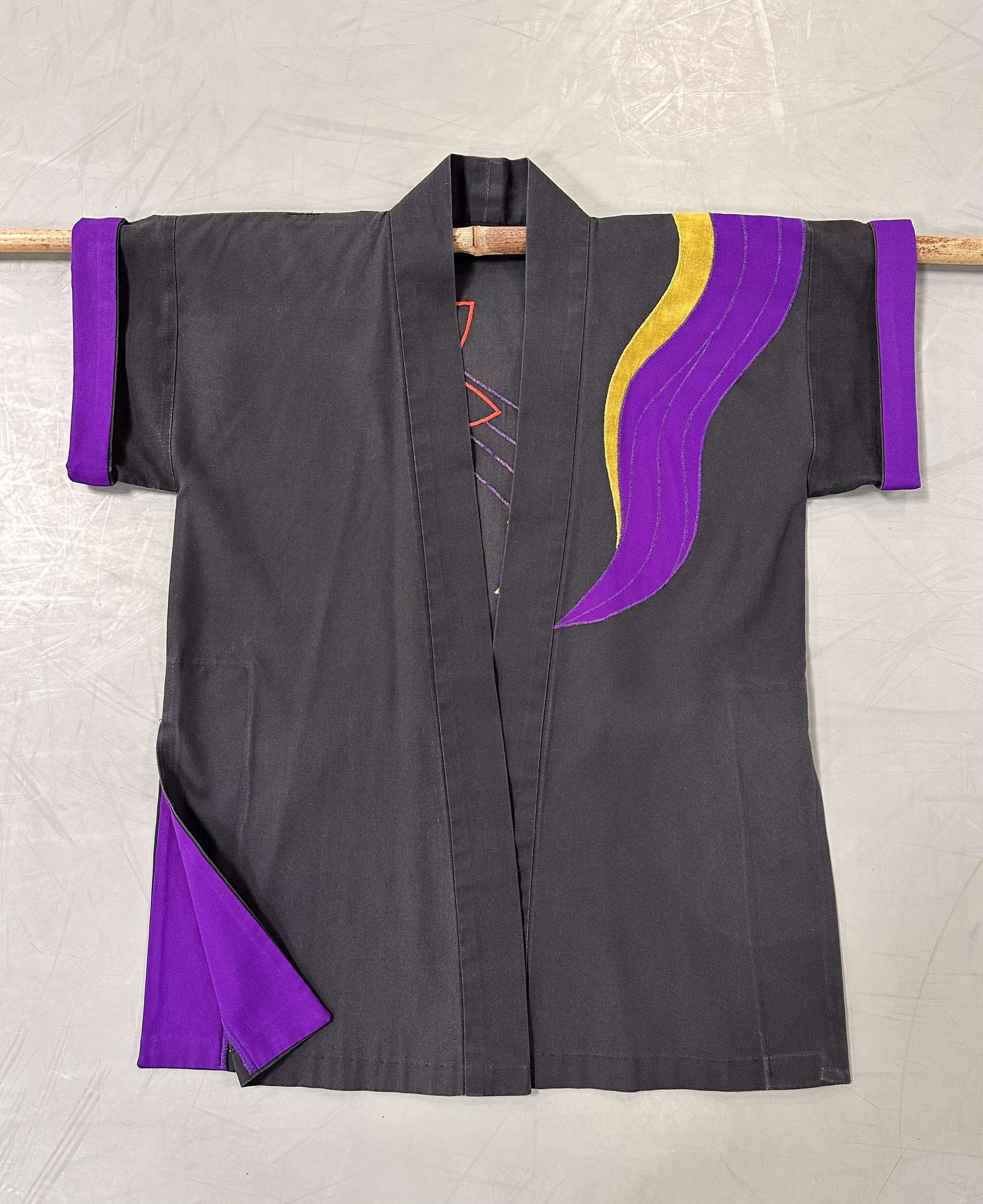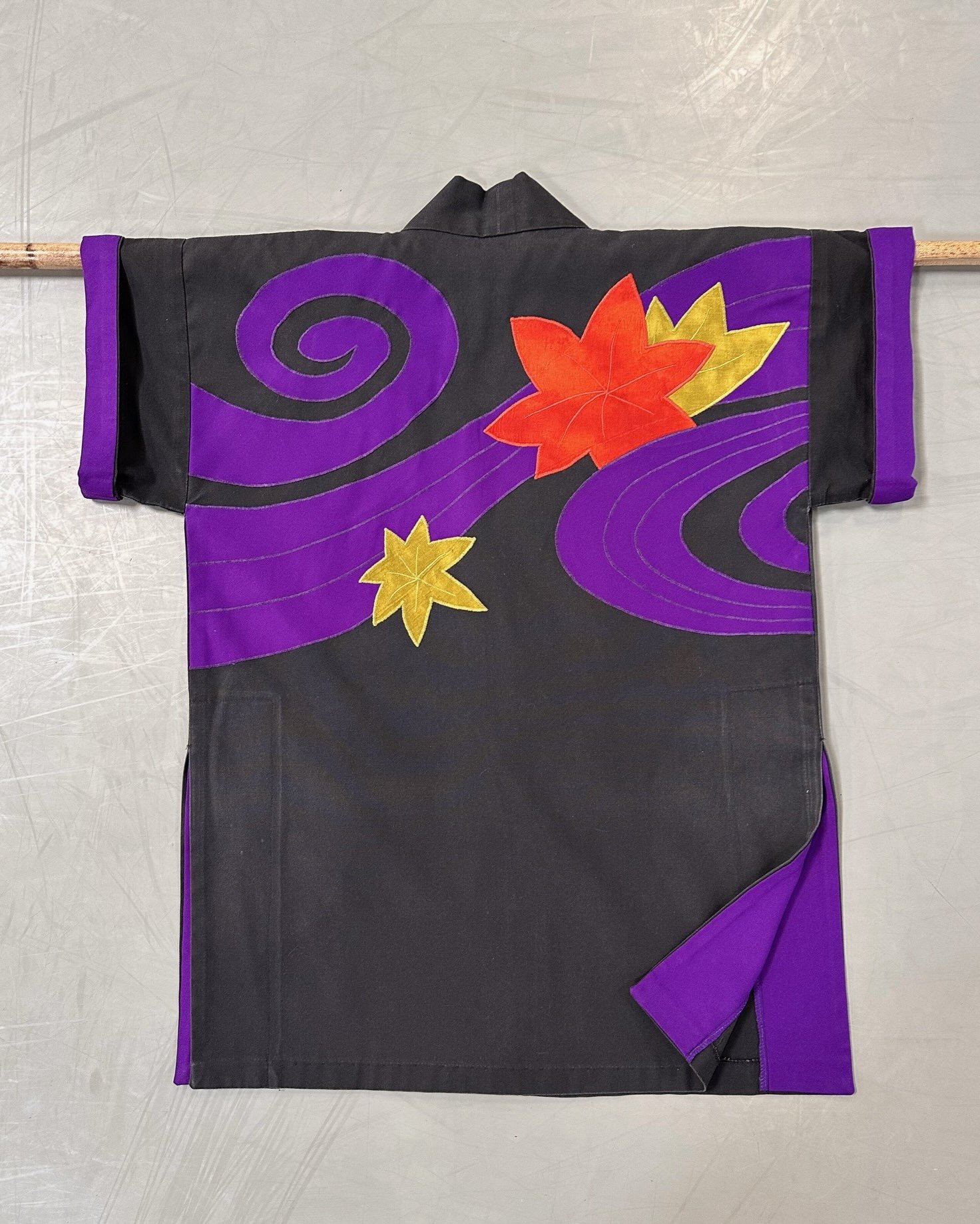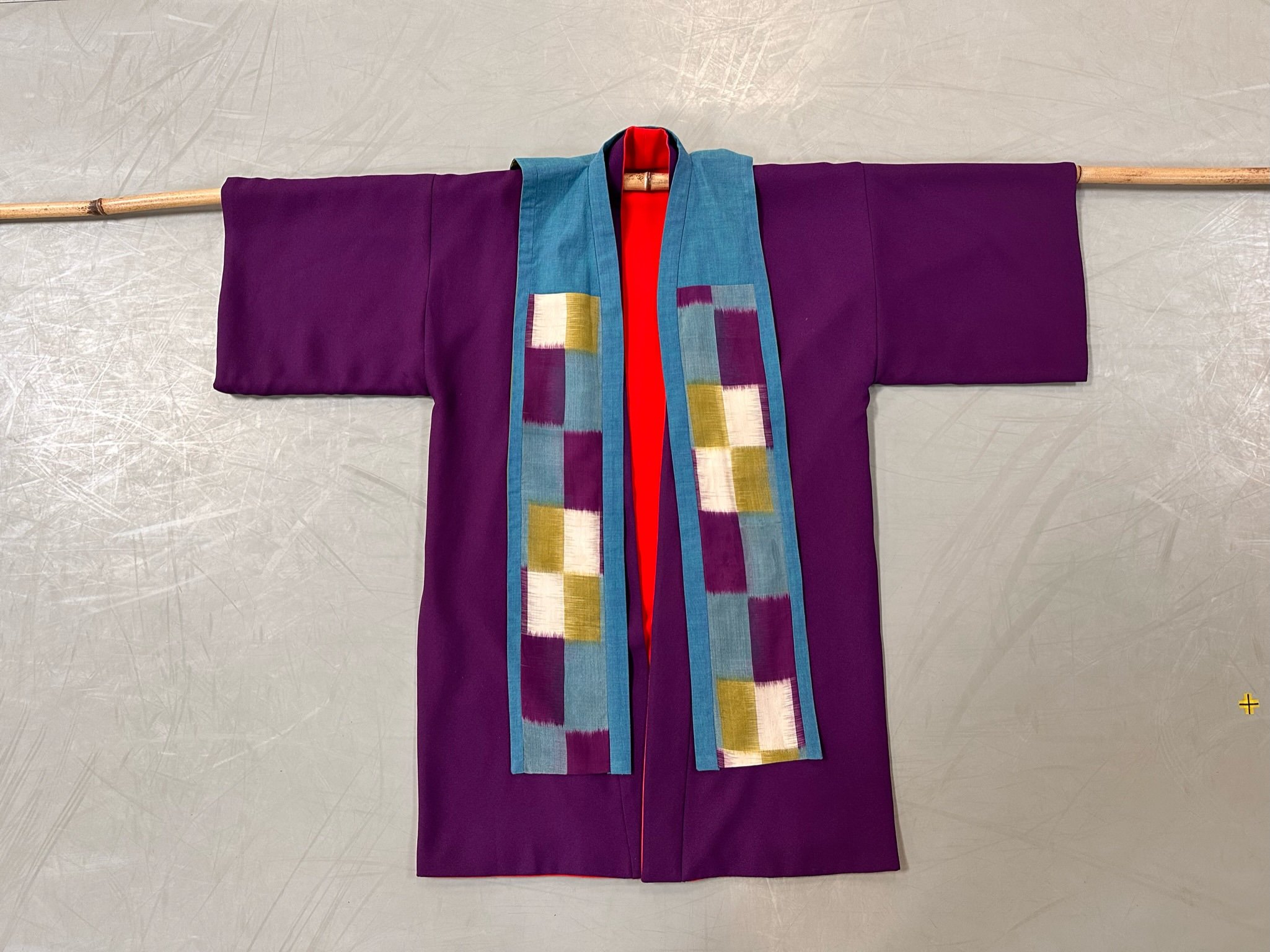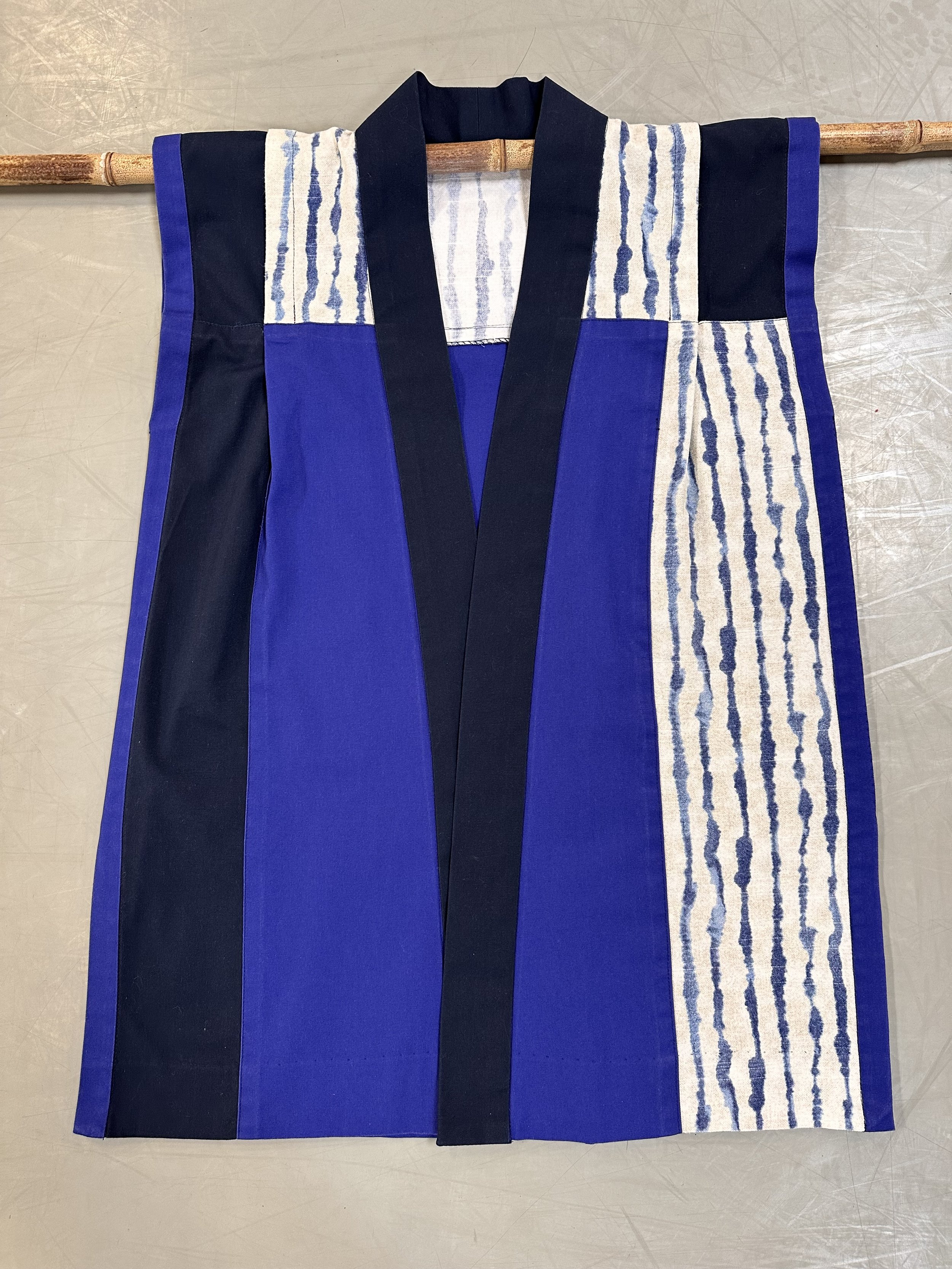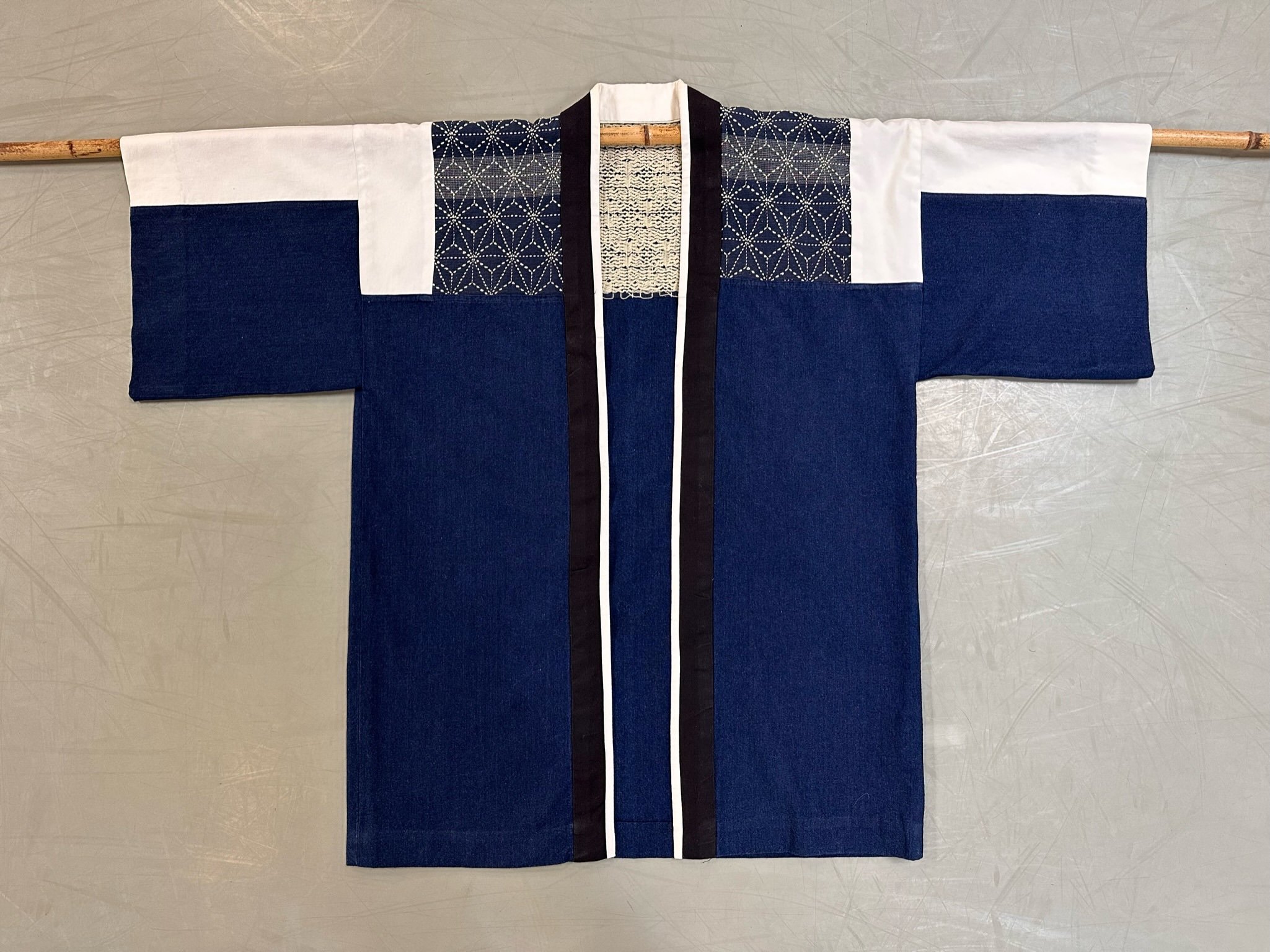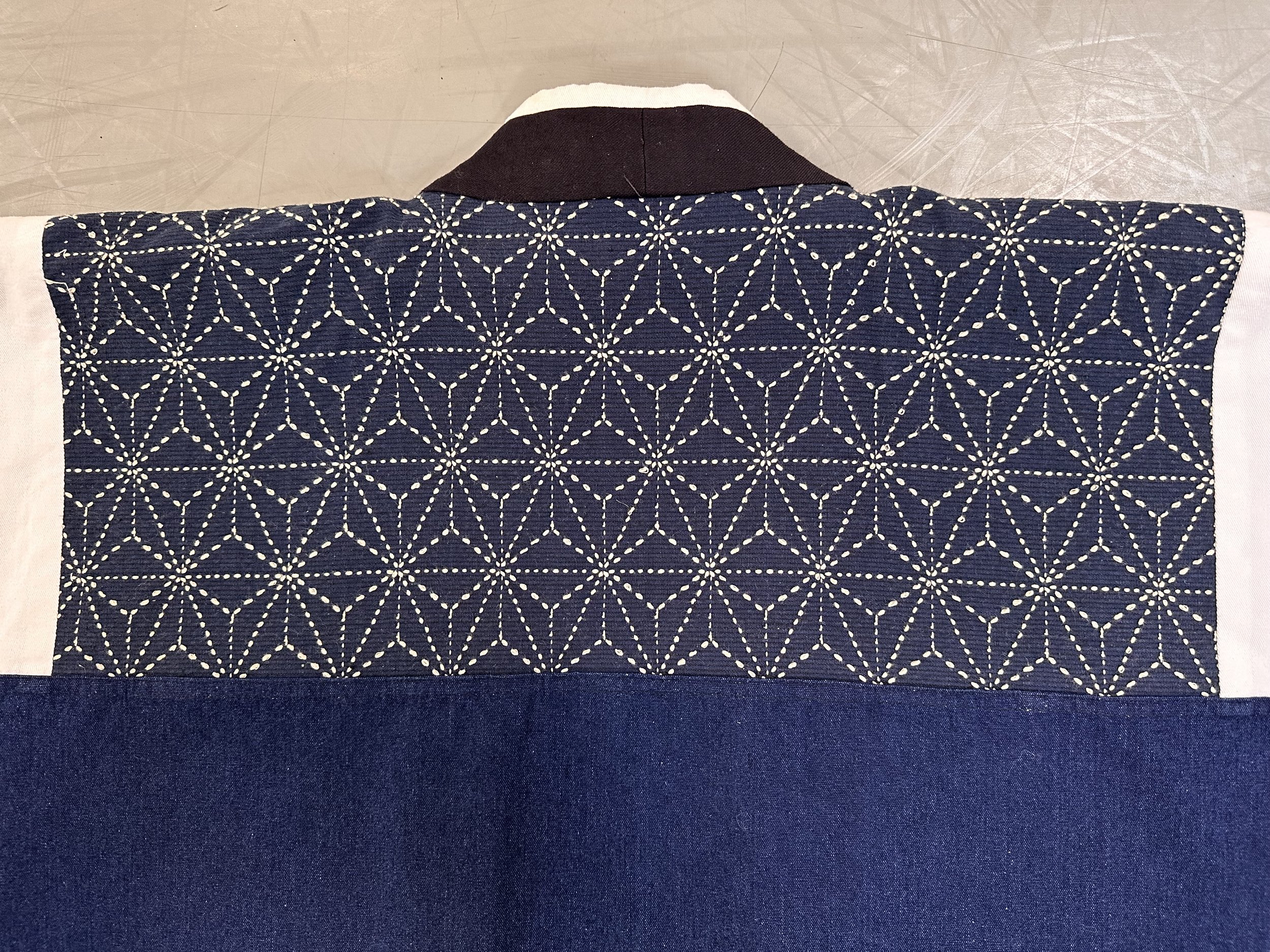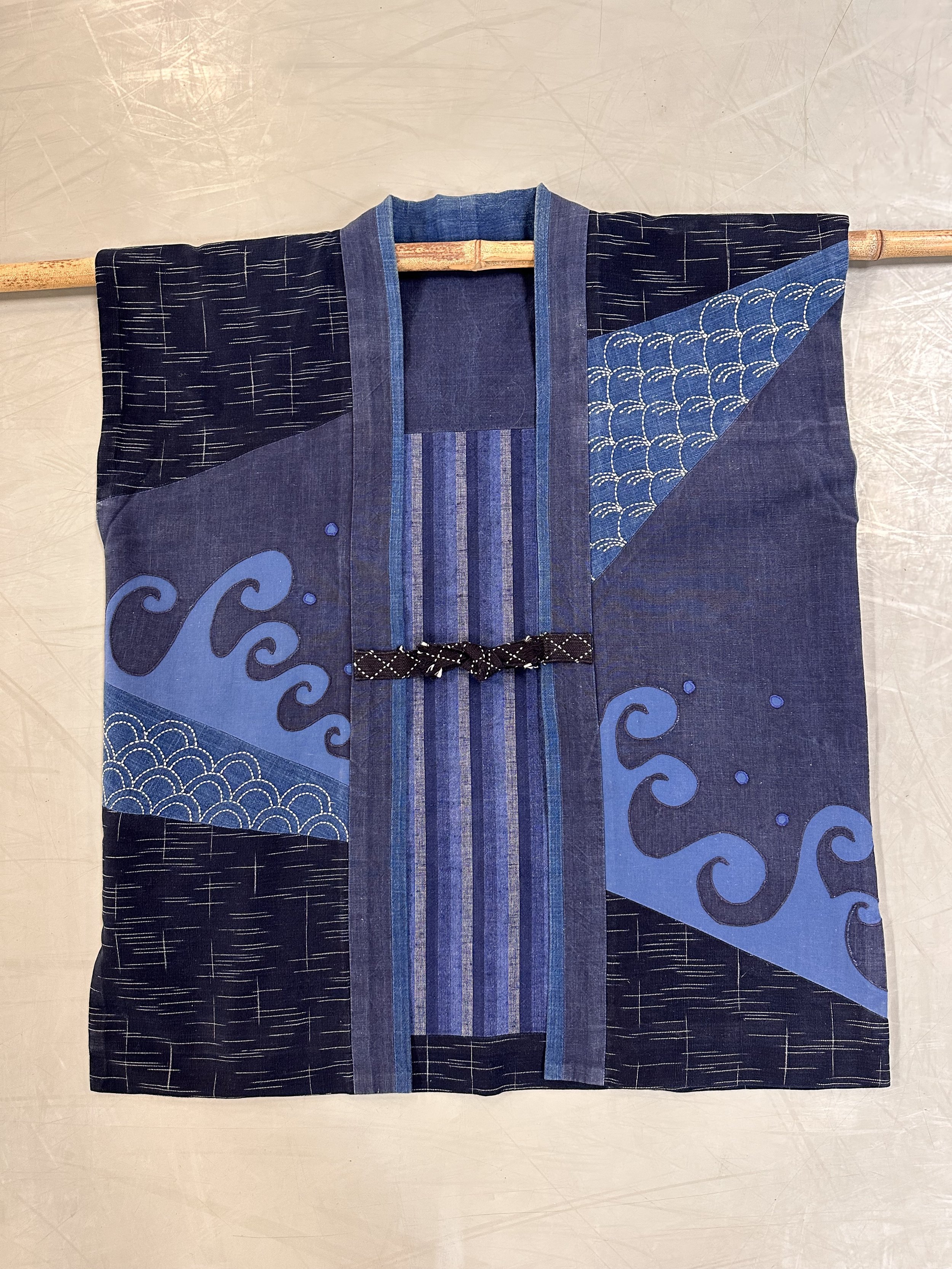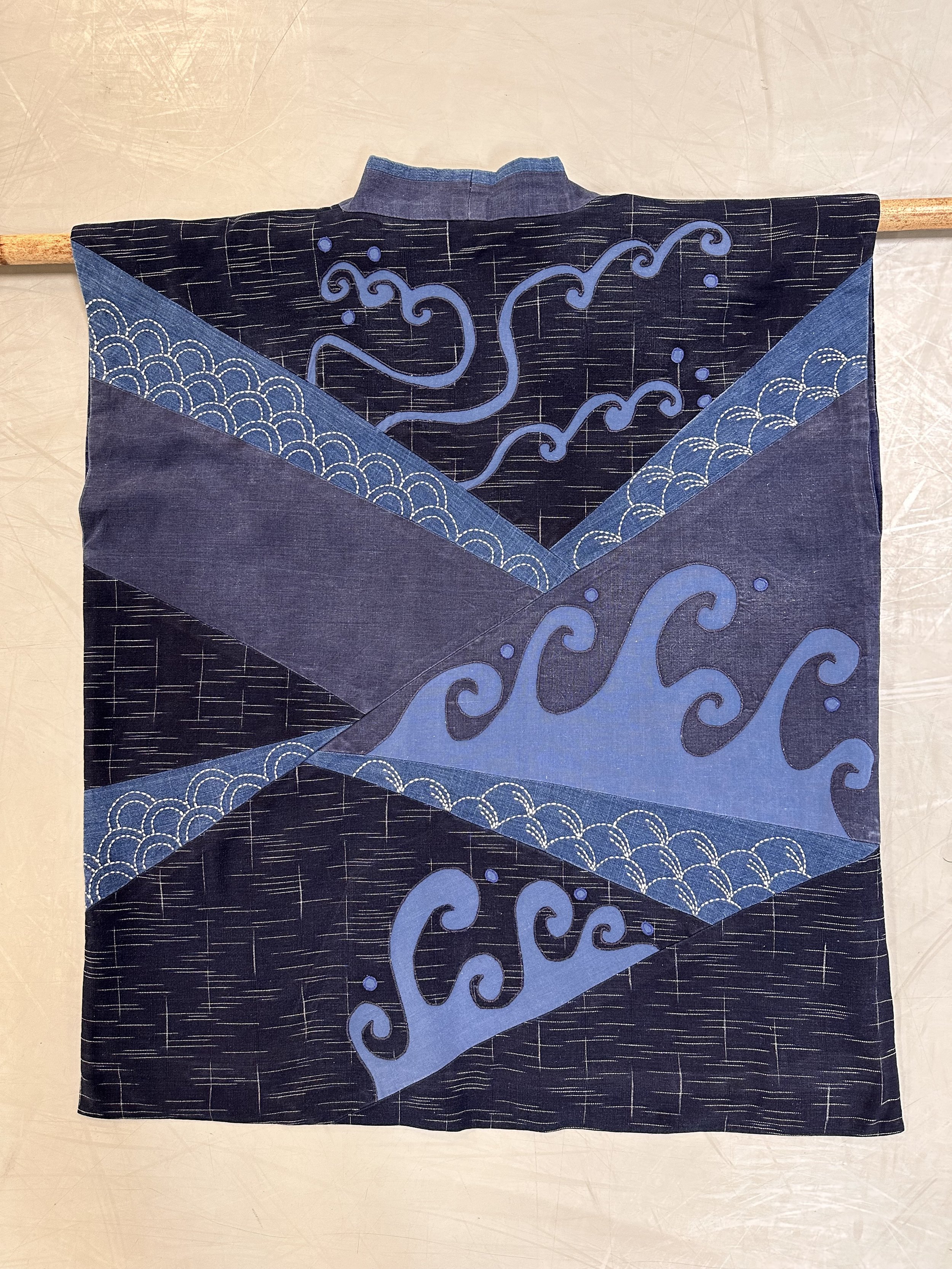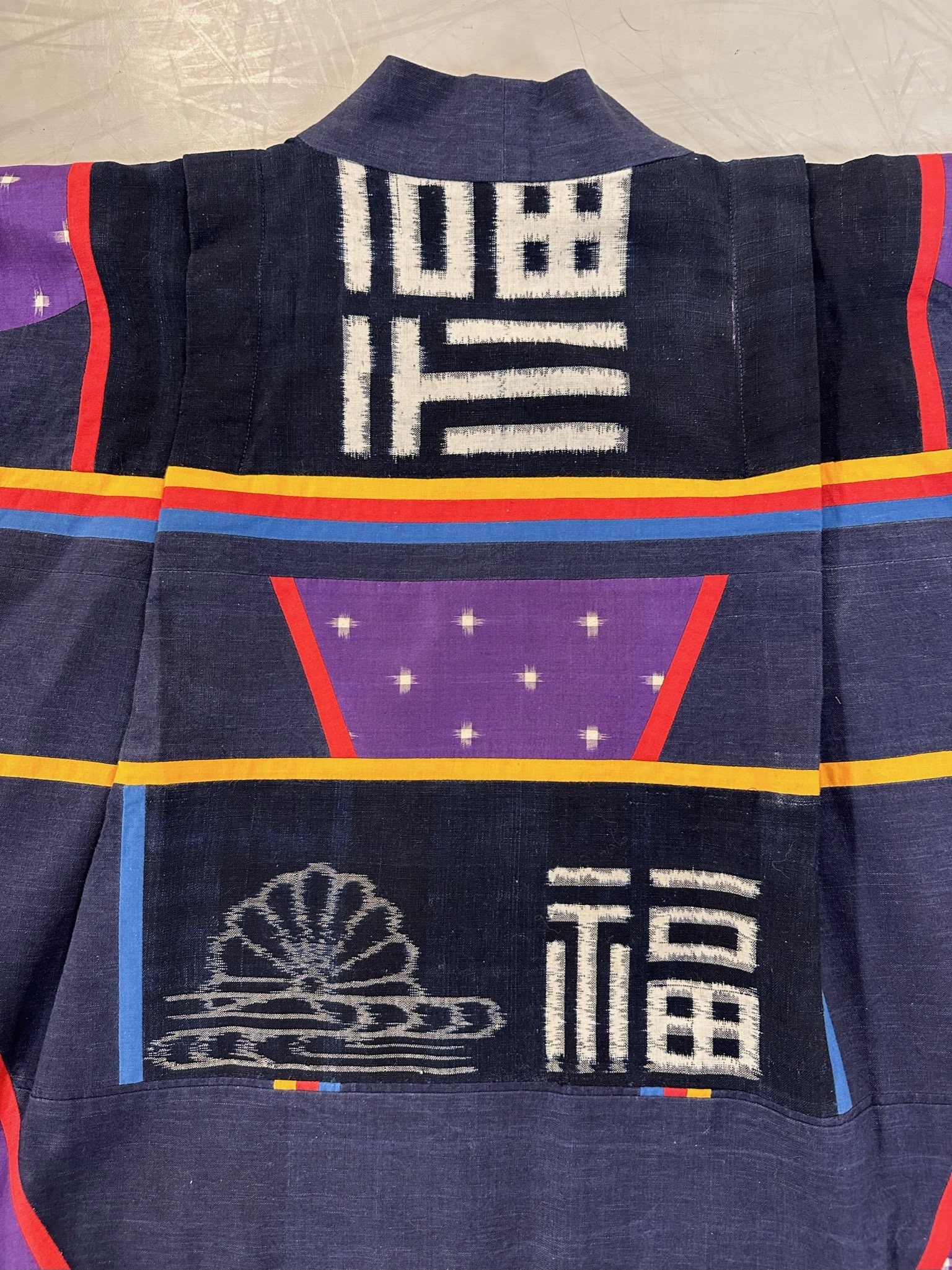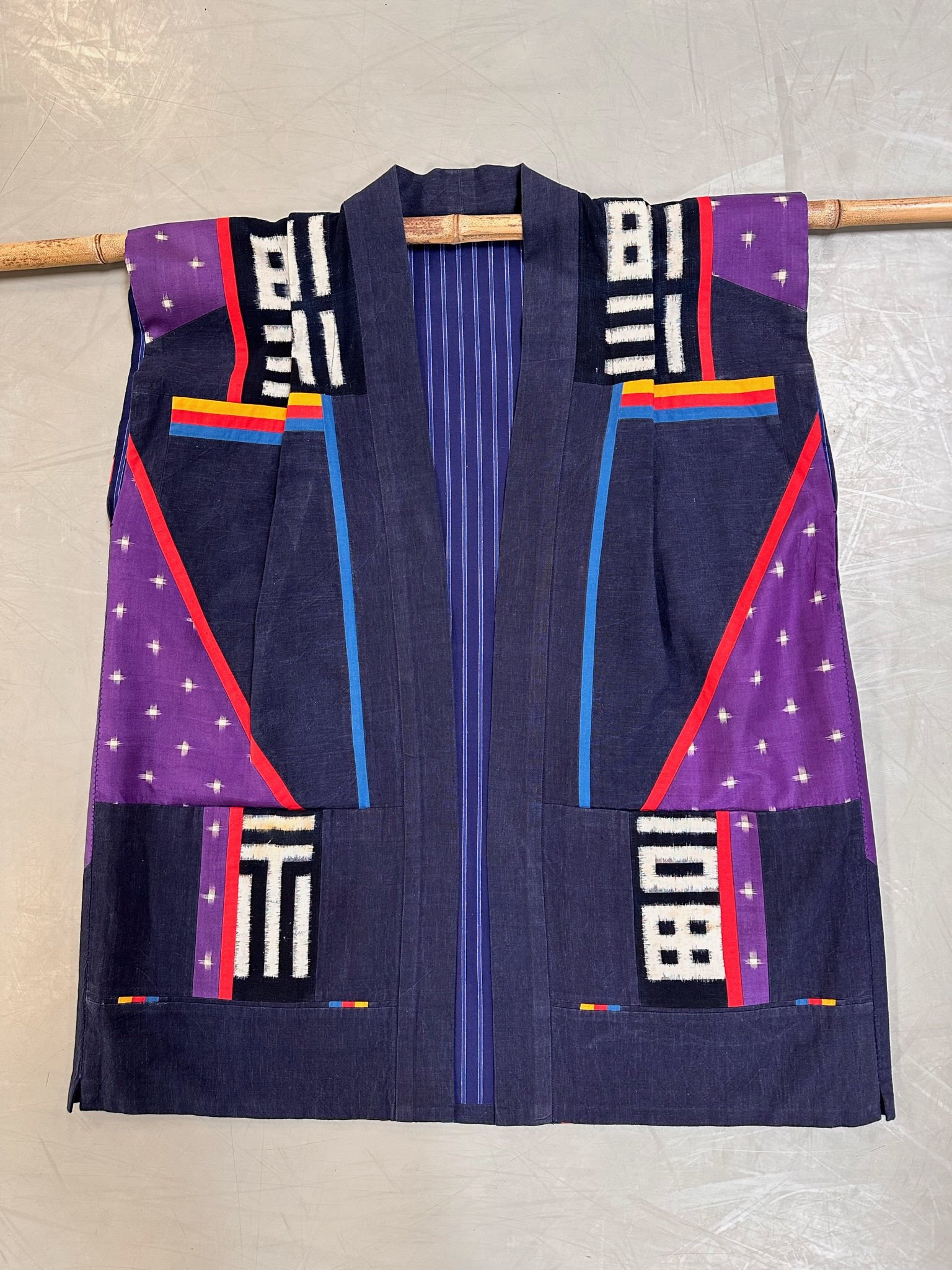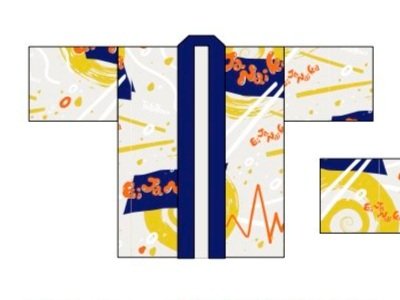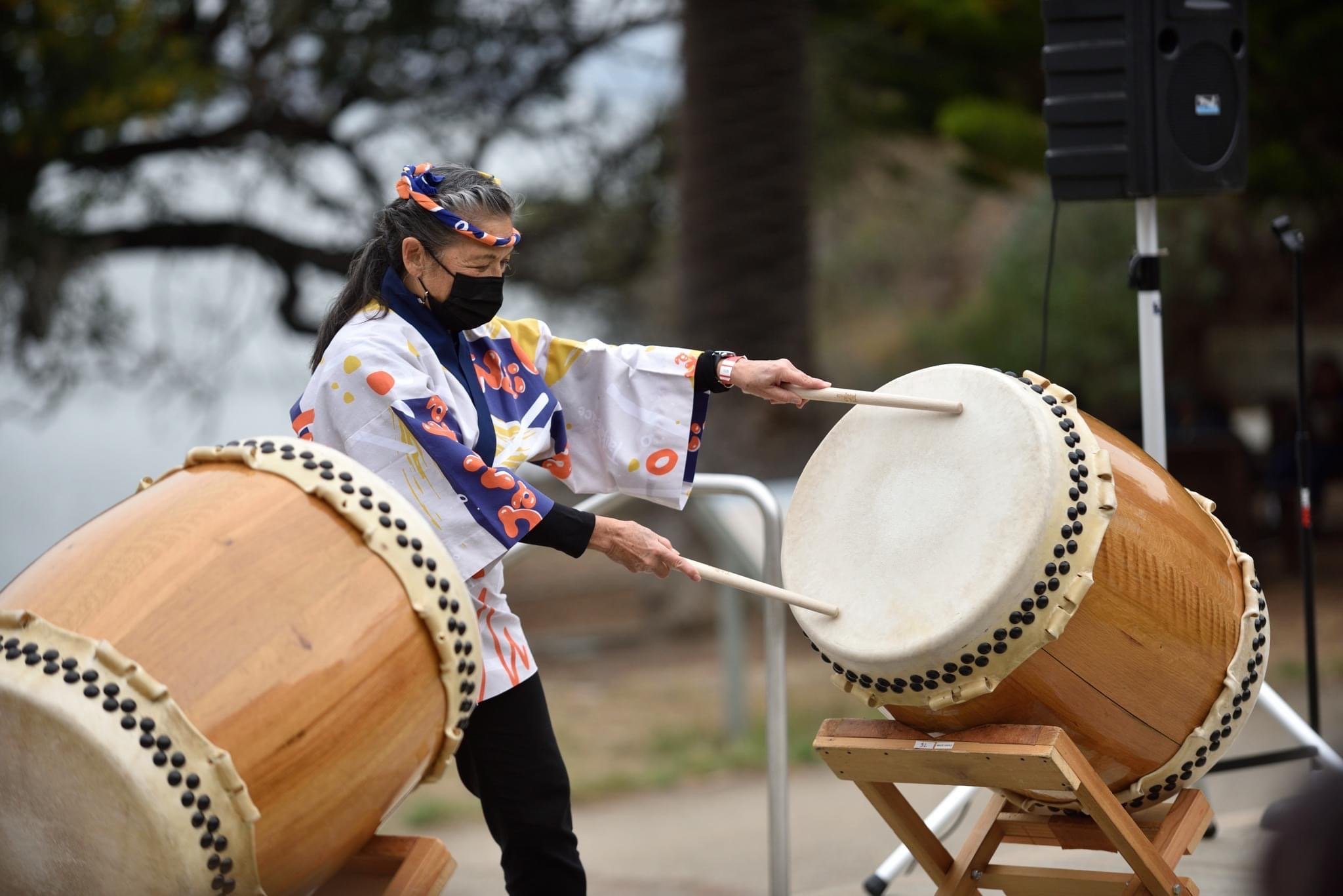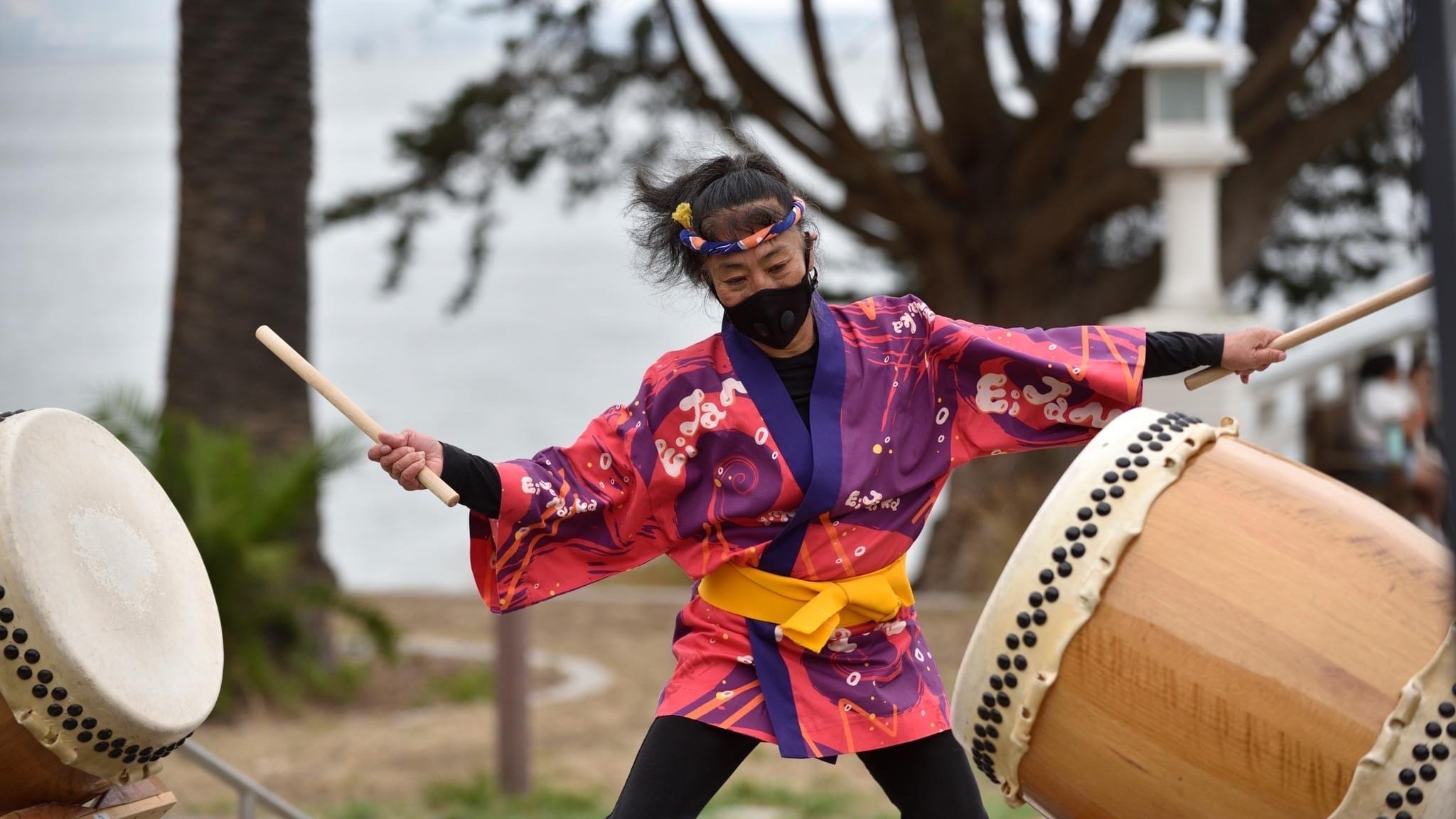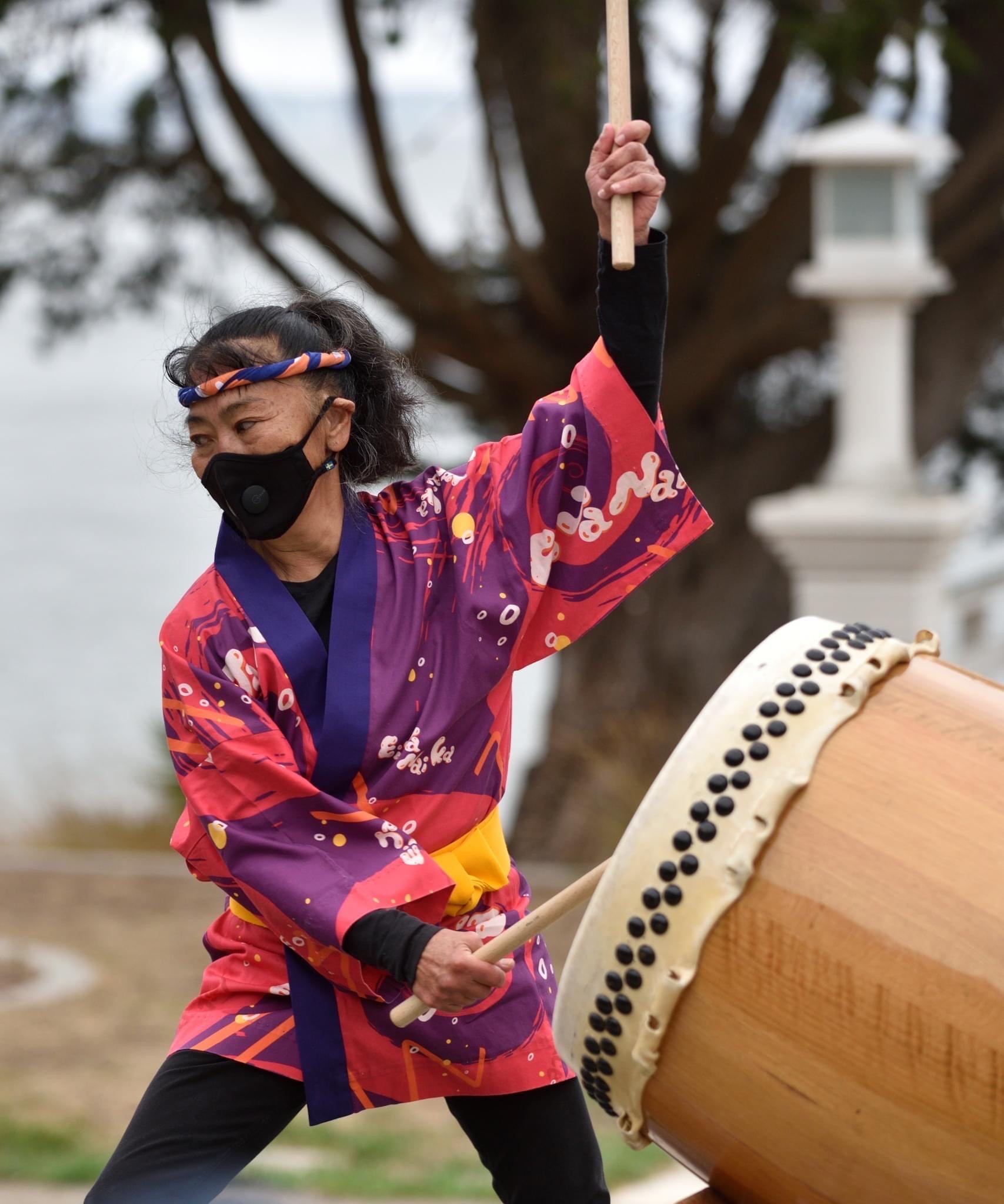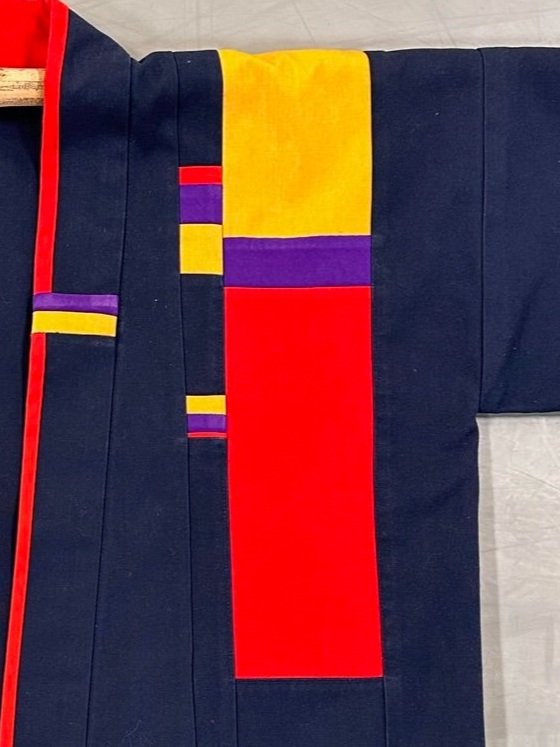Inspired Costume Design
“I’ve always loved creating with fabric and thinking of it as art.
Art that envelops and empowers you.”
PJ Hirabayashi inspired many of San Jose Taiko’s performance costumes during her nearly four decades with the group.
Her design eye coupled with her incredible technique as a master seamstress gave San Jose Taiko’s costumes a distinct look, style, and appeal.
She was an influencer of North American taiko culture through the vocabulary of stage wear and obon festival costumes many which she co-designed with Earthenwear and other talented members of San Jose Taiko.
The unique needs of a taiko player’s movements and range of motion informed the precision and intention behind her design thinking that resulted in costumes with a uniform fit, freedom of motion, and captivating Japanese aesthetic.
PJ and Earthenwear.
PJ and two artist friends, Ellen Reiko Bepp and Linda Ito were young Sansei (third generation) business owners when they introduced their unique clothing line in 1978. The Earthenwear showroom and shop in San Jose Japantown, California, opened its doors in 1982. Together, they designed and made clothing that combined a modern look with Japanese influences. They were also members of San Jose Taiko at the time and applied their sewing expertise to making many of the group’s performance costumes in the early years.
A few vintage Earthenwear designs from PJ’s closet…
Creating costumes for San Jose Taiko.
One of San Jose Taiko’s first costumes.
Designed by Ellen Bepp and fabricated by EarthenWear in 1980, features the San Jose Taiko mon (momiji) as appliqué.
Commemorative happi.
Designed by PJ with EarthenWear in 1983 for San Jose Taiko’s 10th anniversary.
A study in contrasts.
Designed and made by PJ with Earthenwear. The bold distinction of colors made this happi stand out.
For Hiroshima tour.
In 1988, PJ was invited to play with Hiroshima, a smooth jazz band with a Japanese American vibe formed in 1974, on their Los Angeles tour. She designed her costume as well as the same design in red for Johnny Mori of Hiroshima.
Striking a mood.
Created for a collaboration between San Jose Taiko and Anthony Brown’s Asian American Jazz Orchestra in 1998. The joint project was called “Big Bands Behind Barbed Wire”.
The fabric was chosen to resemble the dust and bleakness of Japanese American internment during WWII. For contrast, the bright red symbolizes the shared bond of humanity, protection from evil spirits and catastrophic incidents, and feminine energy - because all taiko players in the orchestra for this production were female. Costume designed by Yumi Ishihara and PJ.
Inspired by Japanese indigo.
This happi was designed with Yumi Ishihara who was inspired by indigo-dyed denim (Aizome in Japanese), known today as “Japan Blue,” that was popularized by the working class of Japan’s Edo period. She chose up-cycled yukata (summer cotton kimonos) with a maple leaf design for the appliqué. The maple leaves represent the fall season when San Jose Taiko formed as a group in 1973.
Vibrancy in motion.
Vibrant Japanese colors and the changing of the seasons inspired the color palette for this costume that celebrates San Jose Taiko’s 25th anniversary. The purple of the swirling water appliqué reflects ancient Japanese royalty because, at one time, it was a color only worn by nobility due to the difficulty of creating the dye. Designed by Yumi Ishihara and PJ.
Blending cultures.
Made in 2000 for the Himawari project that featured selected members of San Jose Taiko and Kodo. The concept was a blend of American and Japanese cultures.
PJ’s personal collection.
Both happi were designed in 2017 for the Smithsonian Folklife Festival where she and Roy were guest artists.
Designed with Earthenwear in 1984 featuring traditional Japanese kasuri or ikat weaving. Elders from San Jose Japantown stitched the Japanese sashiko by hand.
“The Sorceress Cloak”
Made in 1985 and worn by PJ when she and Roy were honored as National Heritage Folk Artists in 2011. Features kasuri or ikat weaving, Japanese kimono fabric, and antique futon covers.
For a Mt. Shasta, California taiko performance, PJ made this costume for Roy and one with a similar pattern for herself. The happi features Japanese kimono fabric.
Heritage Happi (2021)
Inspired by PJ’s song, Ei Ja Nai Ka, for TaikoPeace. Worn at community events where Ei Ja Nai Ka is danced for peace, harmony, and goodwill.
Artist inspiration—Harumo Sato
Fabric design—Devon Menuez
Happi makers—Yumi Ishihara, PJ
TaikoPeace producer—Pear Urushima
Artistic appliqué and patchwork.
PJ’s intention was to infuse taiko costumes with a sense of character that pays respect to her Japanese heritage and the roots of taiko.
Her exceptional appliqué and patchwork technique elevated the costumes she made…adding vibrancy, dimension, movement, and energy.
Gallery
